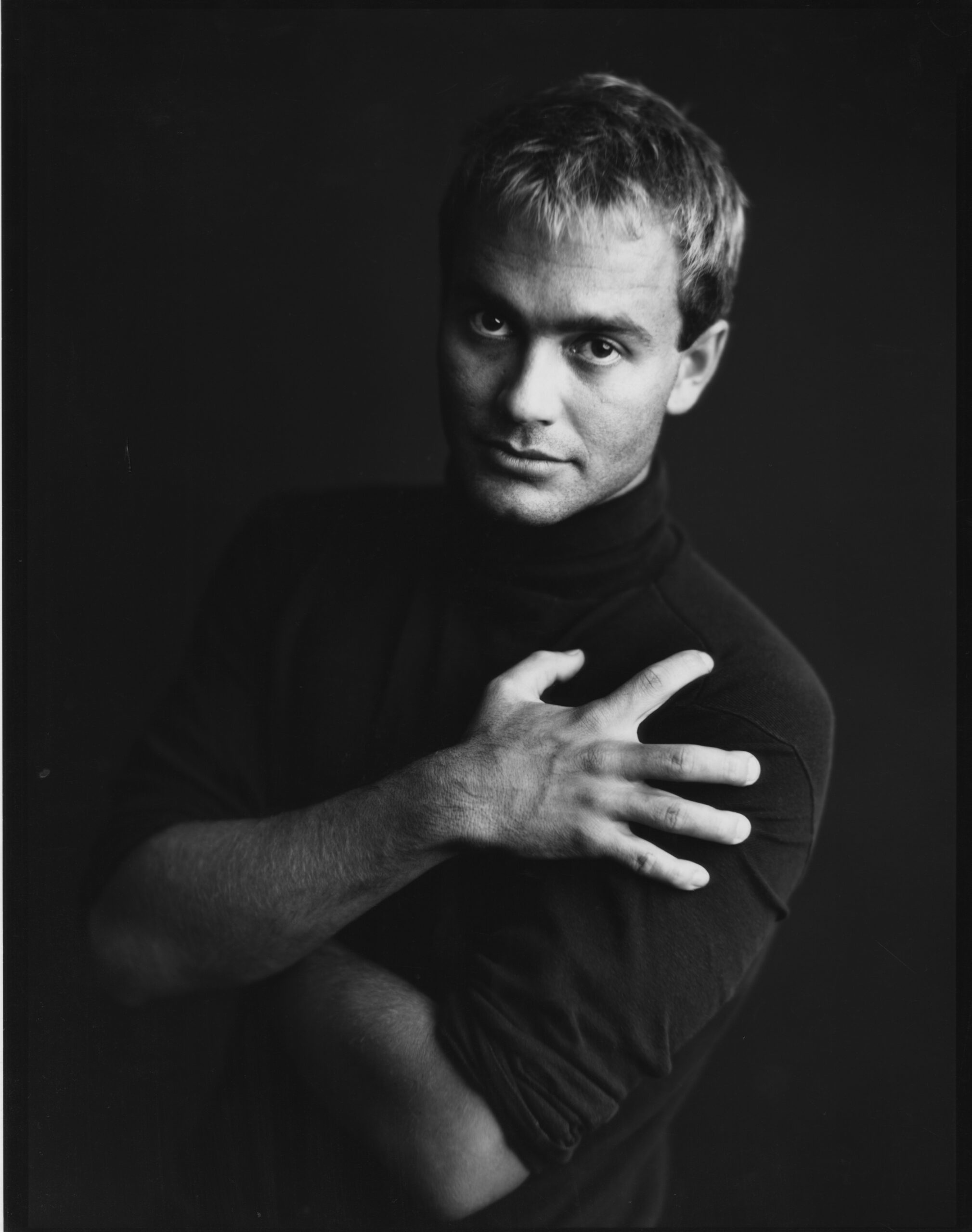
‘Ashley Bickerton, an artist who became the toast of the New York art world in the 1980s, only to depart the scene in a surprise move during the ’90s, died on Wednesday at 63 in Bali, Indonesia. Last year, he was diagnosed with ALS, also known as Lou Gehrig’s disease, which impacts the nervous system and can prove debilitating.
‘During the ’80s, Bickerton became known for a beguiling body of work that parodied consumerist impulses. He made mixed-media pieces that he termed self-portraits, yet they were composed only of logos for TV channels, car companies, cigarette manufacturers, and more. And he at one point even made a brand for himself, SUSIE (full name: Susie Culturelux), which he said would act as an “Index/Name Brand/Artistic Signature” for future art historians.
‘Yet as his style shifted, he began to elude critics, and in the early ’90s, he left the city altogether, departing for Bali, where he continued to operate a studio up until the end of his career. Thanks to the efforts of galleries like Lehmann Maupin, Various Small Fires, and Gagosian, as well as to artists such as Damien Hirst, Jordan Wolfson, and Jamian Juliano-Villani, Bickerton’s work has had a critical revival in the past few years.
‘During the mid-’80s, Bickerton became a market sensation in New York. He was featured in a famed 1986 show at Sonnabend Gallery that solidified the Neo-Geo movement, which revived geometric abstraction with a new postmodern bent, and rose alongside his compatriots Peter Halley, Meyer Vaisman, and Jeff Koons.
‘The works for which he was known at this time were bizarre metal assemblages affixed with elements like leather covering and aluminum pieces. Some invoked the visual language of modernist abstraction, only to suggest that it had lost any transcendence and become corporatized, as Bickerton did in Abstract Painting for the People #3 (1985), in which images of bathtubs, urinals, and toilets in profile are accompanied by the word “ABSTRACT” repeated four times over.
‘Slick and highly polished, these works looked as though they had just rolled off the assembly line. He called them “contemplative wall units”; others sometimes grouped them under the vague label “commodity art,” used to refer to the many artists who incorporated branding into their work.
‘Asked to explain what pieces like this one were about, and why he included so many ideas into them, he told Artforum, in a 2003 interview, “My work was culture.”
‘Once he had made his career with the consumerist works, Bickerton began to push his art in stranger directions that were even harder to parse. He made a group of sculptural pieces that seemed to function as flotation devices; they were emblazoned with the name of his SUSIE alter ego. And he began to focus on the myth of artistic genius, which he exposed as something empty and patriarchal.
‘In 1993, Bickerton’s work took a sharp left turn when he relocated to Bali, where, as he said in the Brooklyn Rail interview, postcolonial concepts began occupying his mind. There was a shift away from the consumerist imagery, toward concerns about what people had done to the paradisiacal nature that could be found in locales like Bali.
‘He began to make paintings that seemed to capture materialism pushed to the extreme—they were filled with mostly nude figures who seemed totally unaware of their surroundings, peeing as they smoked cigarettes and often looking monstrous. In one, Bickerton represented himself, with his body looking less like a human’s and more like a snake’s.
‘In 2021, Bickerton was diagnosed with ALS, and he shortly thereafter announced it publicly. He refused, however, to let his illness consume him. “Life is to be lived and got on with, and I’m busy—too busy—for that,” he told Los Angeles Magazine.
‘Speaking to ARTnews earlier this year, he noted that since his diagnosis, his art has “naturally [been] seen through the prism of my mortality—staring at the infinite. The work I’m doing now will probably be even more so. There’s something sort of ghostly about it. I have no problem talking about it, but I don’t want to be known or judged by this.”
‘But more than anything, what long motivated his art making was a desire to encapsulate every part of life. He said, “I want to be able to address whatever the hell is going on in the world: a sour break-up, a beautiful vista, a tender moment, a yearning sentiment, or some political outrage sweeping the nation.”’ — Alex Greenberger
____
Further
Ashley Bickerton Site
AB @ Lehman Maupin
AB @ Various Small Fires
Ashley Bickerton’s Art Is Having a Resurgence—but His Body Is in Decline
Visions Apocalyptique
Ashley Bickerton Creates Colorful Seascapes with Debris Washed Ashore
Is Ashley Bickerton Damien Hirst’s Bitch
Trouble in Paradise: The Dramatic Story Behind Artist Ashley Bickerton’s Tropical Hideaway
The Life & Work of Ashley Bickerton | A Neo-Geo Sensation
Ashley Bickerton turns trash into treasure and continues to forge a path untrodden
INTO THE GREAT WIDE ANYTHING WITH ASHLEY BICKERTON
Ashley Bickerton with Dan Cameron
Surfing Sin City
Outside the box: Ashley Bickerton
An Interview with Ashley Bickerton
Paul Theroux on how artist Ashley Bickerton became an alien in paradise
Living Content 47. Interview with Ashley Bickerton.
Burned Out on Bali: An Apocalyptic Conversation With Ashley Bickerton
Ashley Bickerton: Artists are dyed poodles dancing through fiery hoops for the one percent …
___
Extras
ASHLEY BICKERTON Bali Studio Tour
Ashley Bickerton at LEHMANN MAUPIN and O’FLAHERTY’S NYC
Gray – Gray – The Mysterious Ashley Bickerton
Ashley Bickerton in conversation with Aaron Curry
_____
Interview
by Dan Cameron
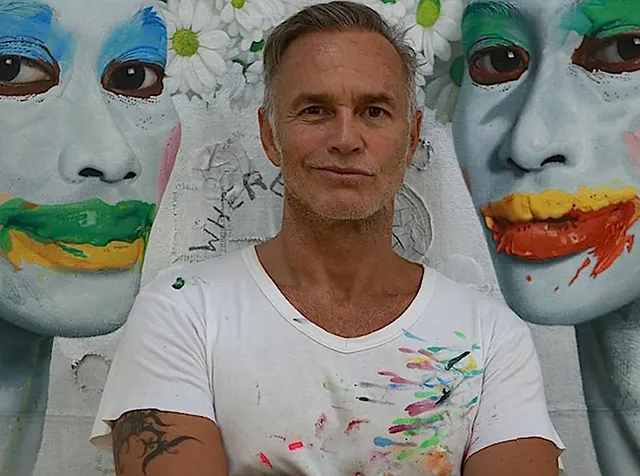
Dan Cameron (Rail): Do you still feel like a New York artist who just happens to live in Bali?
Ashley Bickerton: Well, my identity was forged there, and my language was forged there. Even my sense of being an artist in the larger world was forged there. In that sense, I’m a New York artist, always will be.
Rail: I agree with you, and I think that the terms by which you began your practice in public are still very much the terms that you’re operating with now.
Bickerton: We could also parse what being a New York artist means—in my case, a New York artist who went to CalArts and studied with John Baldessari, who then went on to work with Jack Goldstein. These are all very LA kinds of connections.
Rail: Also, you were dealing with conceptual art in a way that other CalArts students ended up doing. You were deeply interested in the object. In your own words, you were after Judd, you were on his trail.
Bickerton: Yes, it’s so funny now to think that at one time I saw god in those boxes, and now I just see an expensive box. He made the empty container so you could pour in whatever you wanted, and people poured god in, they poured in the world, the universe. They became these sort of ornate Mandarin ritual artifacts.
Rail: Every biography that mentions you starts with “Ashley Bickerton came up in the East Village with Peter Halley, Meyer Vaisman and Jeff Koons,” and in retrospect it seems completely inaccurate, like pretending that the horse race itself is art history. Is that one reason you left?
Bickerton: At the risk of fingering slipshod academics and lazy journalism, that is the case. You just get processed like a taxonomical artifact, like some butterfly with a pin through it. You get labeled, indexed, and committed to some construction of “historic record,” and then it all moves on again. It’s stifling in every sense. In many ways it’s a lot like an actor being typecast. The other thing that maybe caused my need to move, to break out, was what I’d actually done to myself. I had set up an artistic dynamic based in many ways on reacting against the work of Donald Judd and turning his boxes against themselves. The box became my tool, and then in the end my prison. So there I was, handily and superficially labeled by a lazy art history on the outside, and structurally limited by the parameters of the box on the inside. I desperately needed to break free, so when New York City went south for me, with my career circling the drain, a marriage in tatters, and facing yet another bleak winter, I just said, “Enough. Let’s just roll the dice, get the hell out of here and see what happens.”
But I want to parse that New York identity thing a bit more. One of the best essays that I feel has ever been written on my work was by Abigail Solomon-Godeau. Reading it the first time was such an odd and surreal experience. It felt as if she was just seeing right through me, like I was some sort of Alex Gray painting. I actually got goosebumps. She reached in deep and strung things together that painted a very different picture than the usual boilerplate descriptions of my work and history. Instead she laid out seemingly unexpected links to artists like Jim Shaw and Mike Kelley. Besides being a longtime California-based intellect of the highest order, Abigail is also a preeminent Gauguin scholar, so she was able to draw in all of this stuff and pull very different lines of thought together—things that I hadn’t even thought of myself. She very clearly laid out the California route and its relationship to both the Pacific and New York. You have to remember, in cultural terms, while Hawaii in many ways is very different from the American mainland, it shares its closest cultural kinship with California. Growing up in Hawaii, my idea of America was California, and I found it very interesting that she was able to see that there was so much California in the work.
I also have to say that when I bought a house in Los Angeles and moved back there, I was quite happily surprised by how welcoming many of the artists were. My impression was that it was a general thing amongst California artists that they were so welcoming, but I was told by other artists that it’s not the case. I’m not sure why I was afforded that sort of welcome.
Rail: Well, I think that for an LA artist, if Ashley Bickerton comes back to California, then he’s not just a Californian by default, he’s gonna be welcomed as the prodigal son.
Bickerton: Thanks Dan, one would certainly like to think that. It is true though that when you leave a place, no matter what the reason, there is often a residual feeling of abandonment on the part of the people who you’ve left behind, no matter what your reason for leaving was. I feel I have always had that following me since my departure from New York. The city can wear on you, so when many artists get to a certain age they just want to get out of the grating metropolitan heat trap and move to places like upstate New York, somewhere quieter and more pastoral, more bucolic. Many of my contemporaries did just that, but upstate New York with its frigid northeastern winters was not an option for me, so my upstate New York was located halfway around the world in the tropical belt. That was the only difference. Of course it brought with it lots of other issues, a lot of them technical, some logistical, and more than a few emotional.
Rail: Regarding the artistic transition between New York and Bali, it looked like you were making one body of work after another, pulling people more deeply into what you were after, just as we were all shedding a lot of what the late ’80s were supposed to have been about. I mean, speaking for myself, I found myself in the 1990s attached to more of a post-colonial framework of thinking about art, and dealing more openly with the political realities embedded in artistic discourse. Who of this generation that we’re talking about really expressed any particular commitment to that, other than you?
Bickerton: Yes, it’s a huge problem when you see decades of artworks go through the same repeated formal gyrations, always solipsistic, always hopelessly self referential, mute in the face of the world’s boundless variety and dynamism. When you first encounter these explosions of newly developed artistic languages—Conceptual Art, Pop Art, Minimalist Art—the excitement of their arrival and potential application are dizzying. Slowly it dawns on you that those art forms are only capable of using their considerable machinery to describe themselves. They were hopelessly unable to apply themselves as discursive tools of the larger world in any meaningful sense. Donald Judd’s work is incapable of discussing his feelings when holding his first grandchild, just as Clyfford Still’s work could not possibly be put to the task of describing the anatomy of a toxic relationship, or a gorgeous foreign vista shared with a young lover—they can only add association and background music. And so what the hell was I doing locking myself into an insular feedback loop that lived only to mutely reflect a societal moment? Why wasn’t I able to just use all these new tools as the vehicles they were ideally meant to be, to address the vital world that I saw swirling around me every day?
Rail: What I think is different in your case, Ashley, is that I never knew you to not question the limits of mere style. You were always breaking down that language, and always pushing back against the typecasting. Did the change of physical or geographical context also change the meaning of the work?
Bickerton: That is ironic in a way, because after moving to Bali, I came back and did a show in 1996 at Sonnabend Gallery, and the common reaction was, “Oh, my God, look at what this crazy place he’s moved to has done to his work. It’s like he’s living on the Island of Dr. Moreau.” But the truth was that I planned the entire show out before I left New York. What I wanted to do was get out of the city so that I could have enough time to do that labor intensive work that I could not have done in the city. Over the course of my years in New York, my time had become so intricately tangled in a raft of adjunct distractions. I mean, once you’ve been around for a certain length of time, you feel an obligation to attend the opening of your ex-assistant’s boyfriend, and every other marginal contact you don’t wish to offend. These begin piling up until you come to a point where you start trying to plan out your work week and realize that the entire thing is already booked up. And worse, when you mostly work at night, a six to eight o’clock opening is right smack in the middle of your work day.
Rail: And getting back to work after that…
Bickerton: It’s a 50/50 proposition. So I knew that I couldn’t do the kind of labor-intensive, hyper-realist works that I wanted to do staying in New York. That was what really changed, not so much the content.
Rail: Where, in your estimation, is the critical discourse on your work right now? What has it achieved?
Bickerton: It seems all my support is amongst artists, and particularly younger artists. It’s almost completely non-existent in the marketplace in the west at this point, and also completely non-existent in an institutional context, as you and I have discussed. It’s sort of a mystery. Somebody commented to me recently that I get quite a bit of attention, and I do generate attention or the work itself generates it, but I don’t get institutional support. I’ve never had one regional kunsthalle or one university museum, let alone a one-person museum show of any sort—nothing. The impression this person had was that my seemingly high profile was indicative of both healthy institutional and market support. I do however feel extraordinarily fortunate that I have somehow been able to tread a precarious line through it all that has allowed me to keep making art uninterrupted these past 40 years.
___
Show
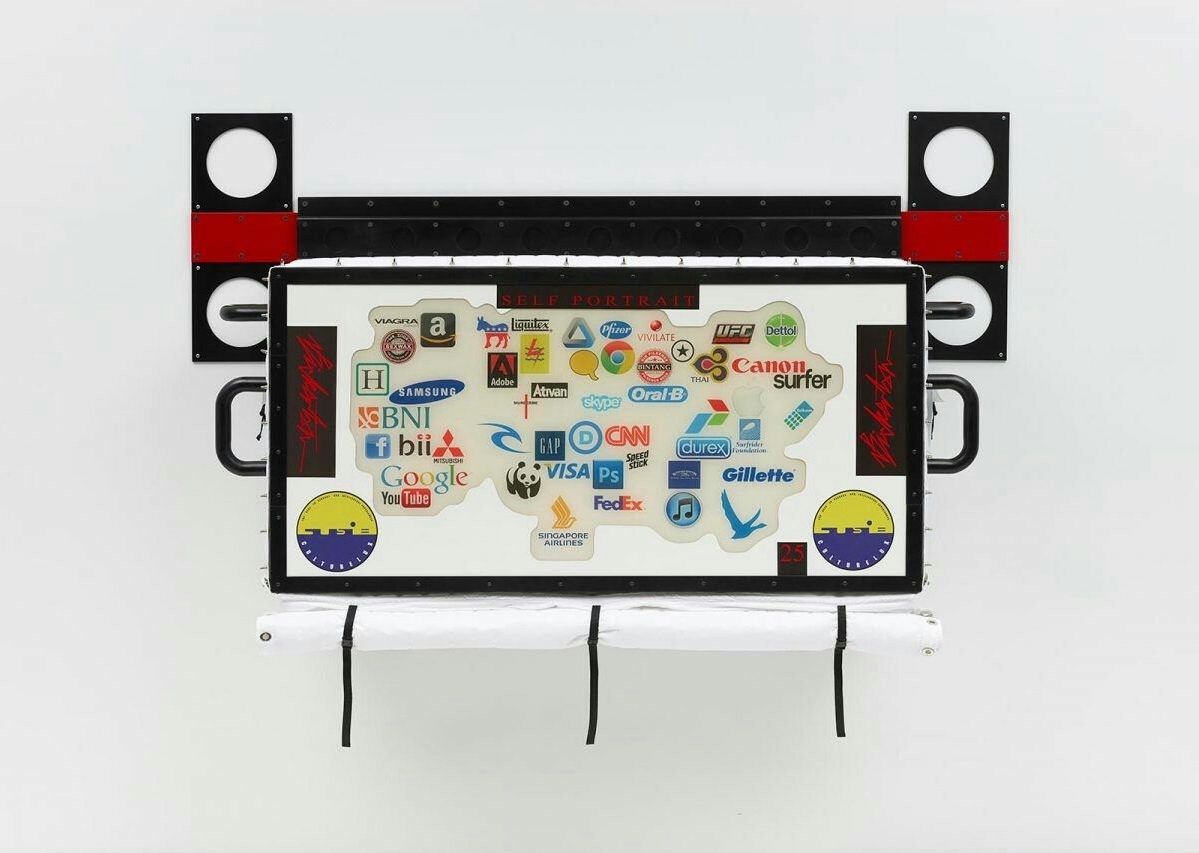
Tormented Self-Portrait: Susie at Arles (25 Years) (2014)
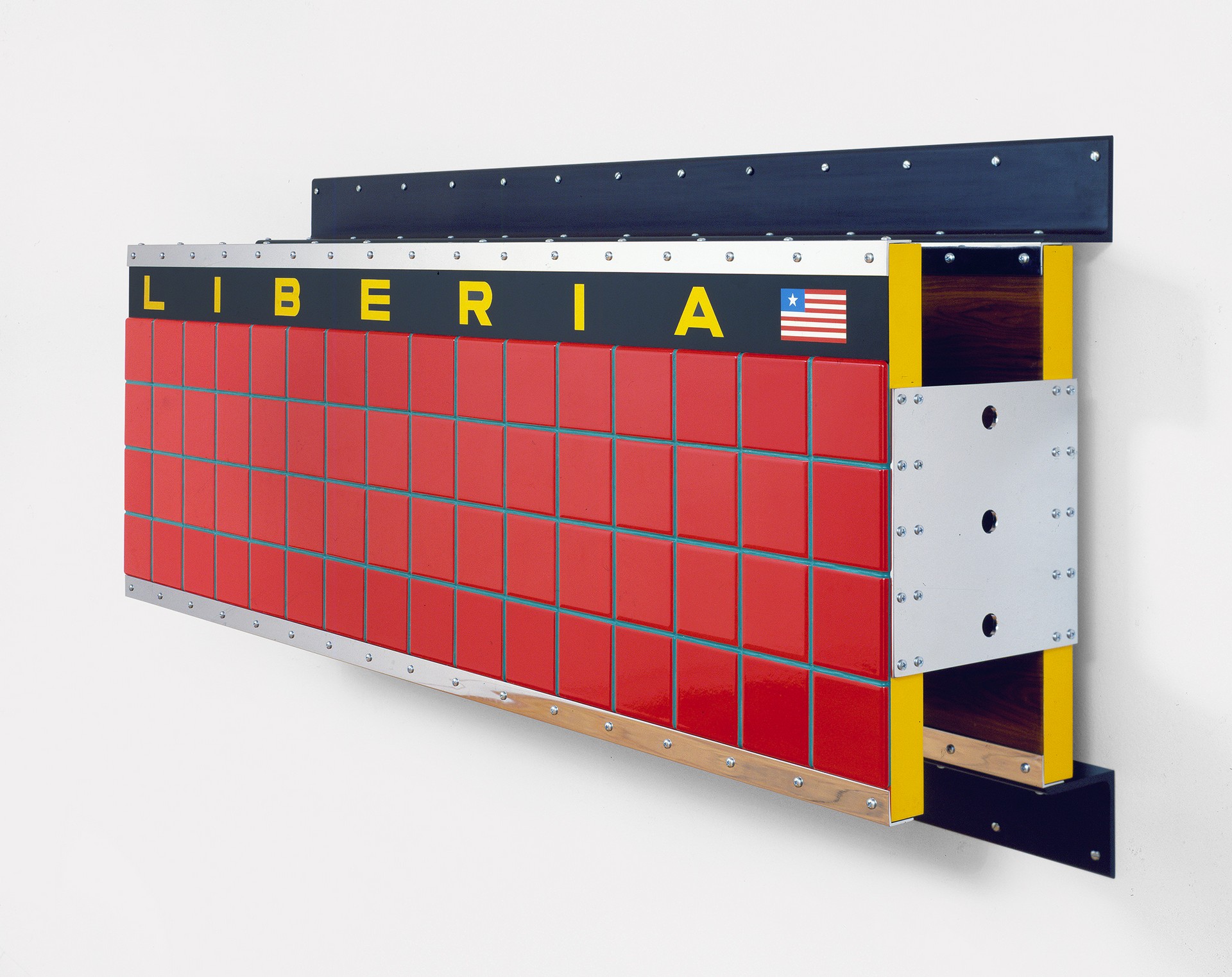
Wall – Wall Sportif #1 (Liberia) (1987)
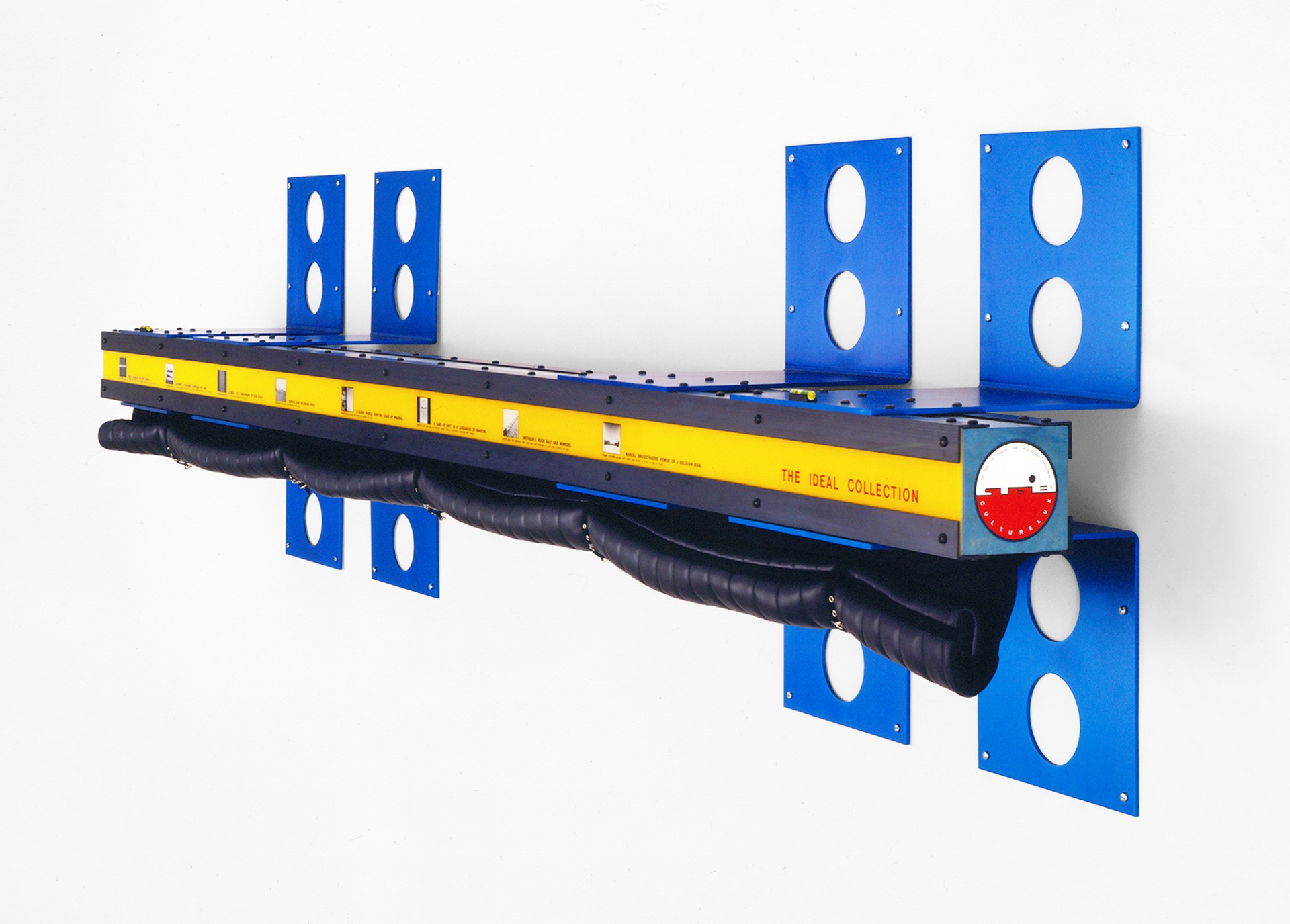
The Ideal Collection 1 (1988)

Formalist Painting in Red, Yellow and Blue (1988)
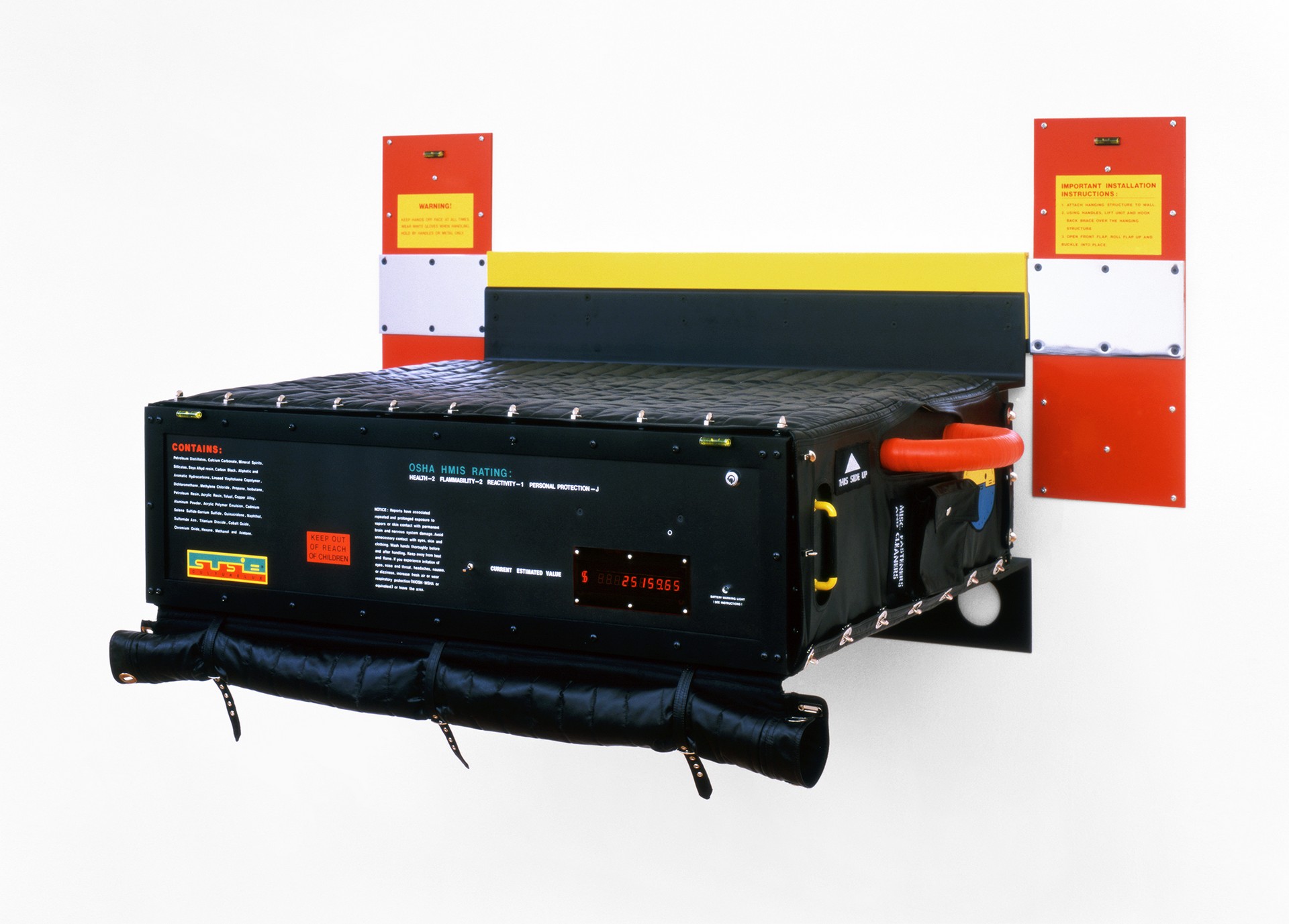
Still Life (The Artist’s Studio After Braque) (1988)
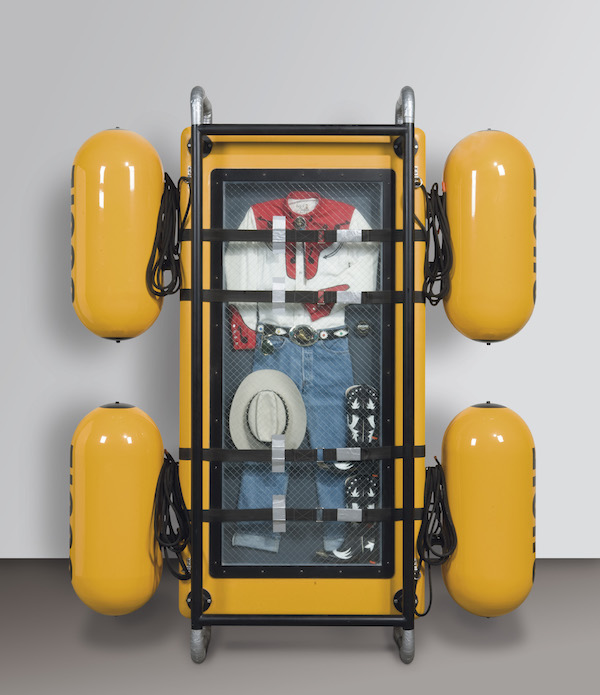
Seascape: Floating Costume to Drift for Eternity II (Cowboy Suit) (1992)
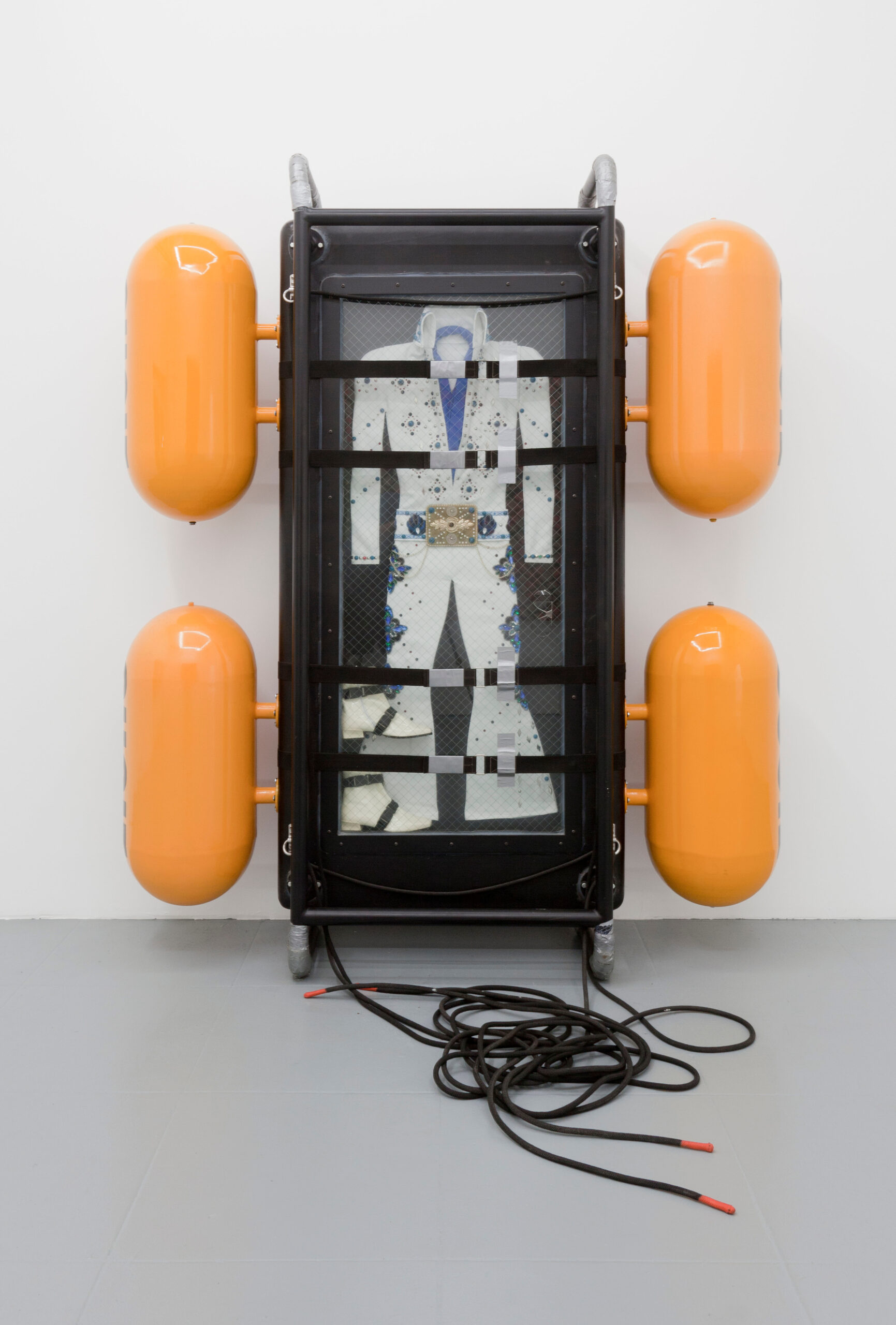
Seascape: Floating Costume to Drift for Eternity II (Elvis Suit) (1992)
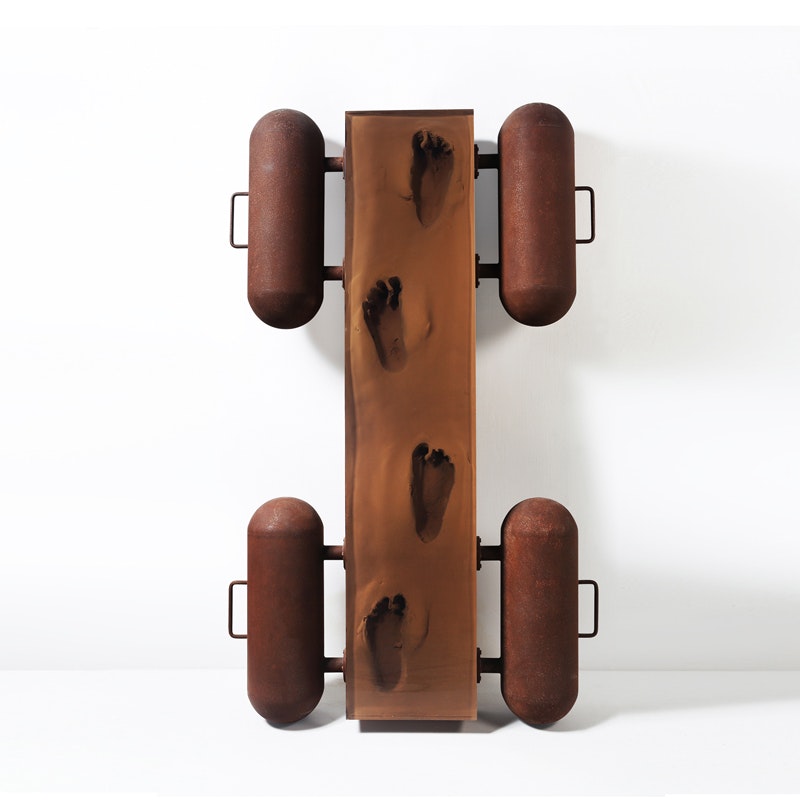
Mangrove Footprints 1 (2021)
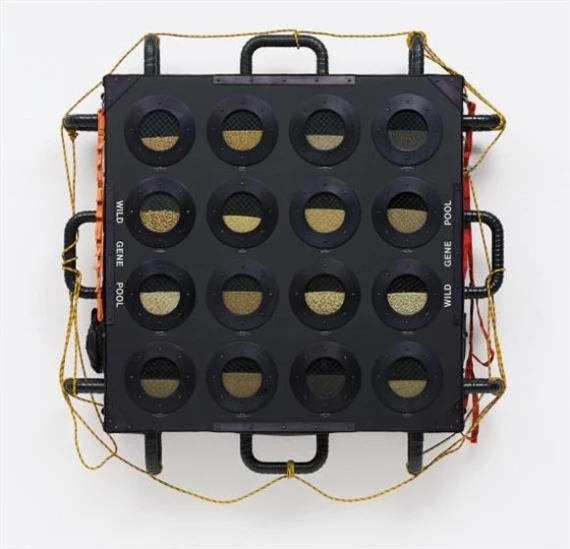
Wild Gene Pool: Ark (1989)
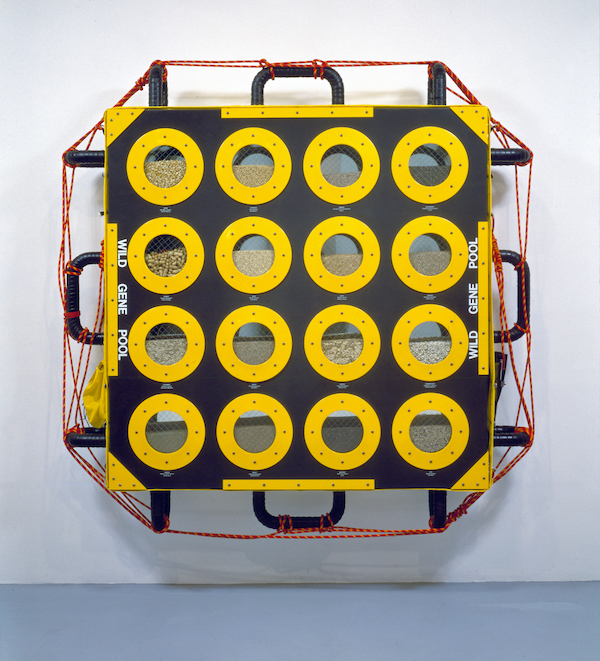
Wild Gene Pool: Ark # 2 (1989)

Ornamental Hysteria (2006)
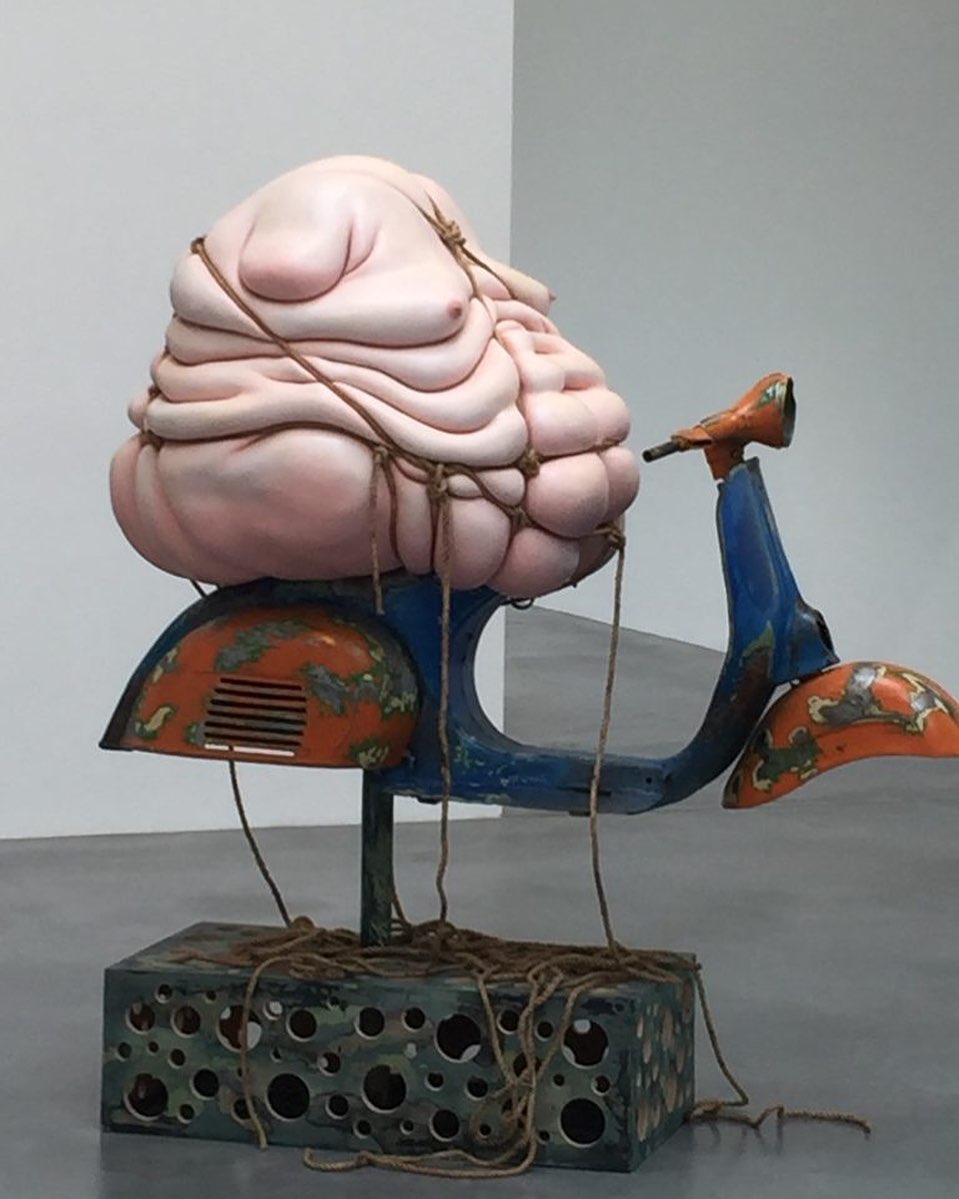
Fat Body on Vespa (2015)

Dish (1996)
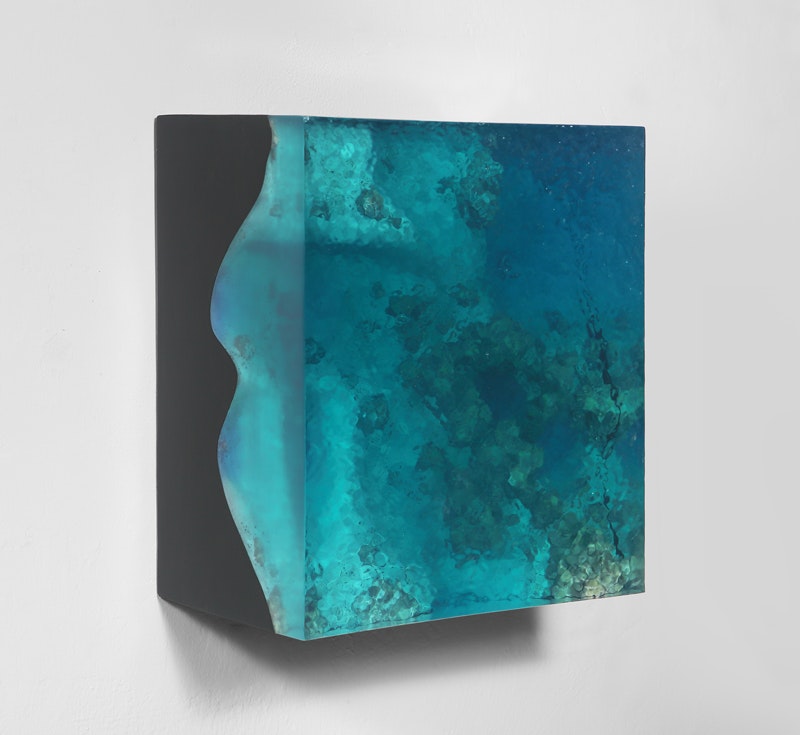
8°36’59.2″S, 179°05’27.9″E 1 (2022)
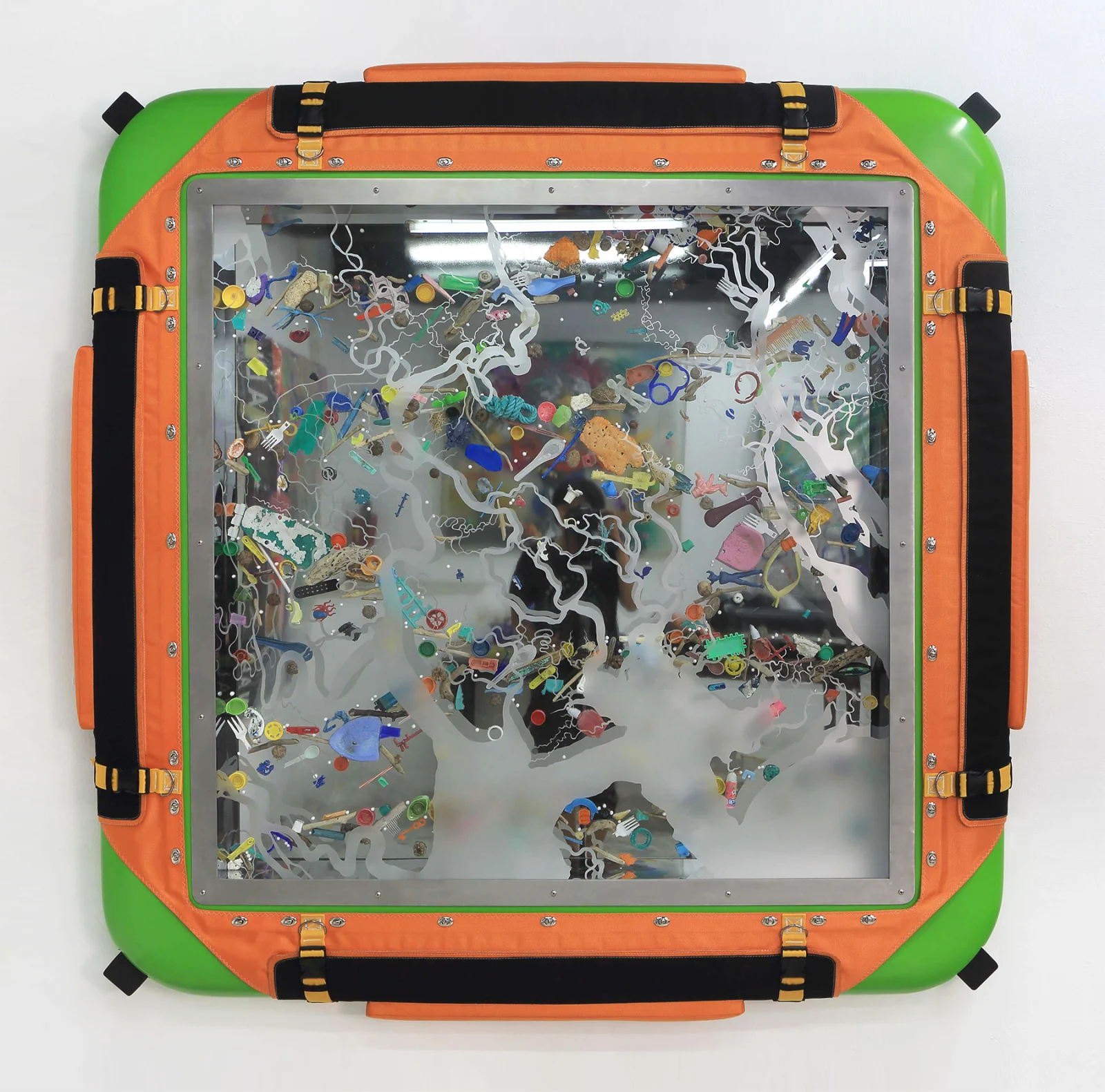
River Vector : GB – OC (2019)
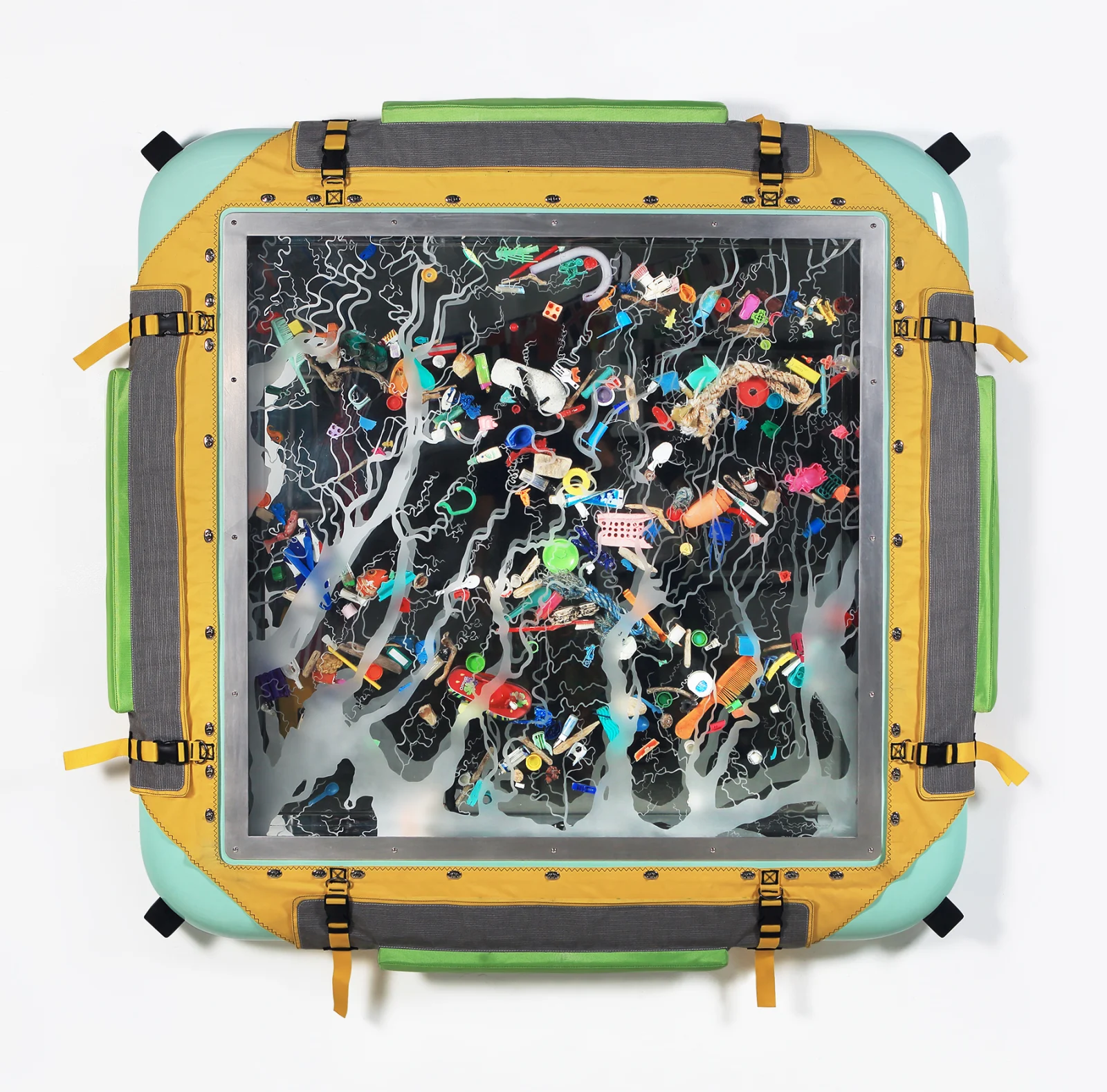
River Vector : TB – YC (2019)
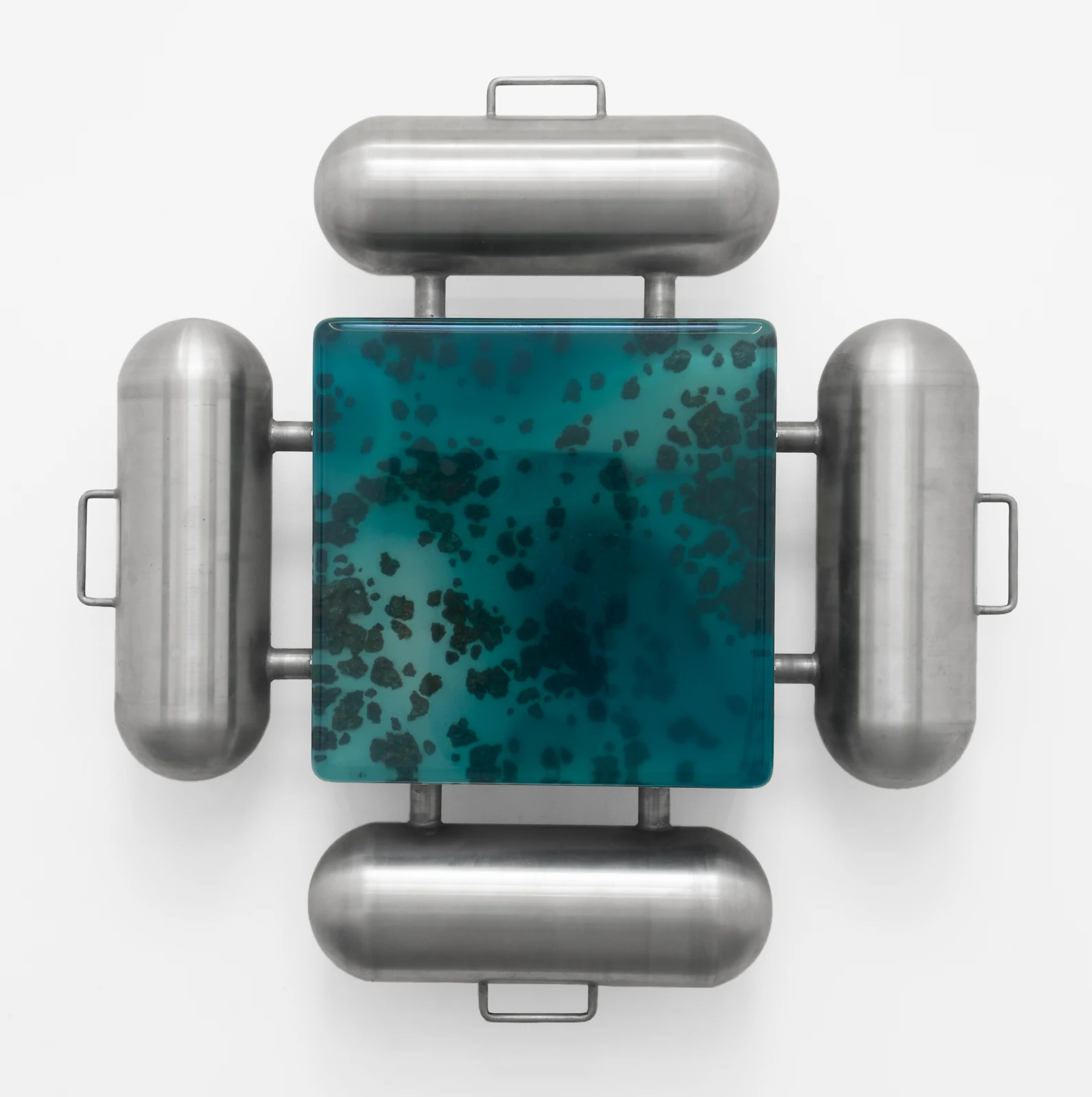
Floating Ocean Chunk : WM 1 (2019)
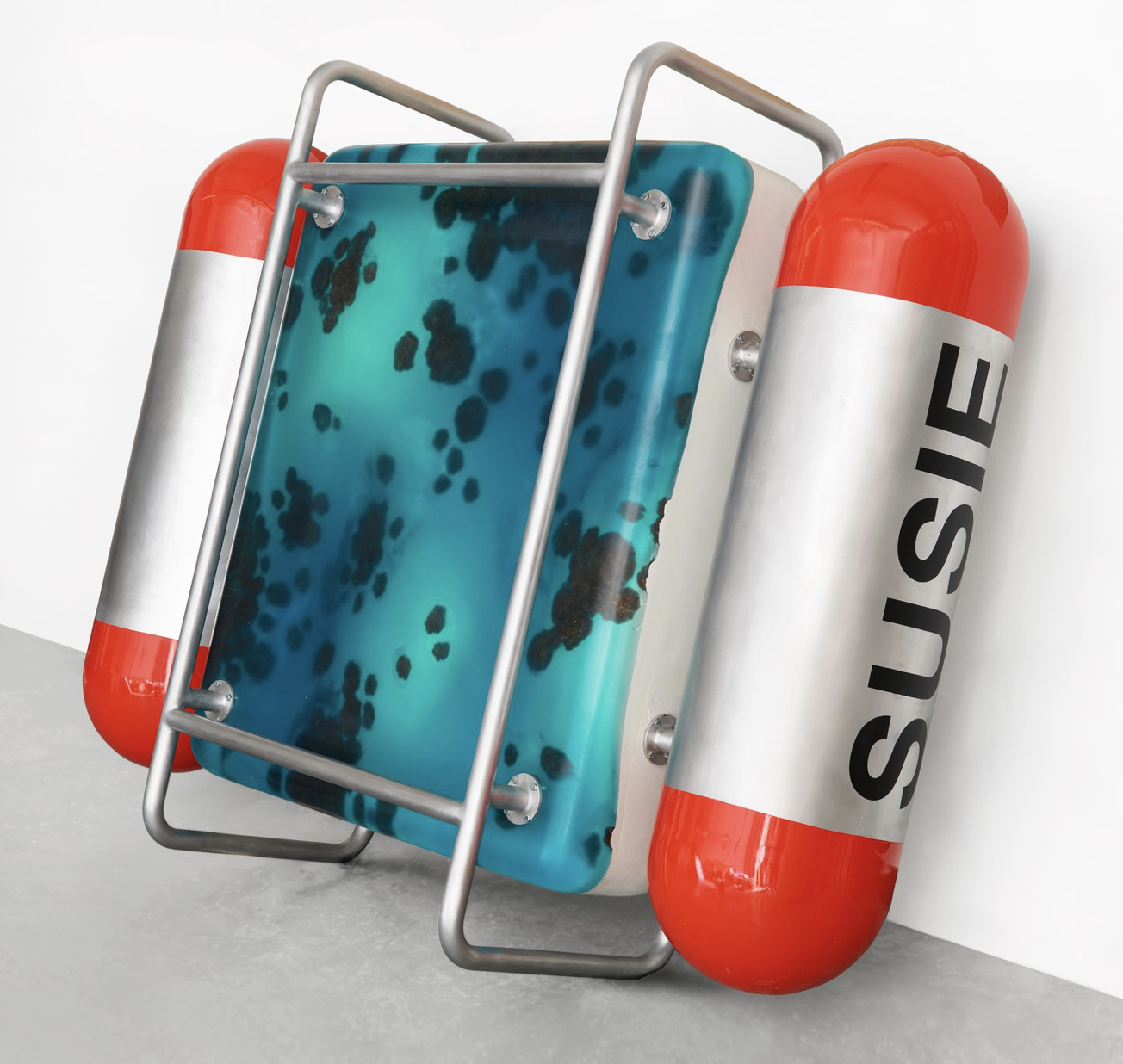
Seascape: Floating Ocean Chunk No. 1 (2017)
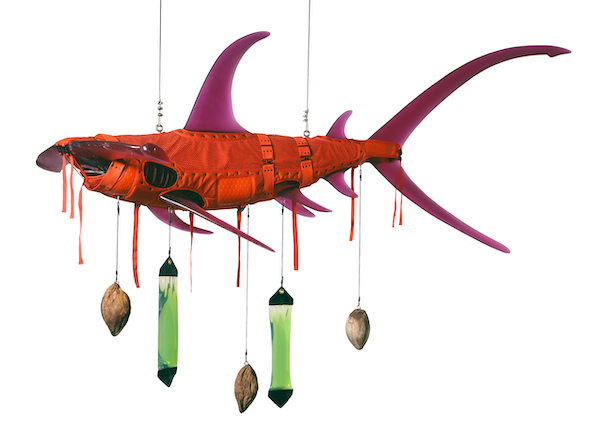
Orange Shark (2008)
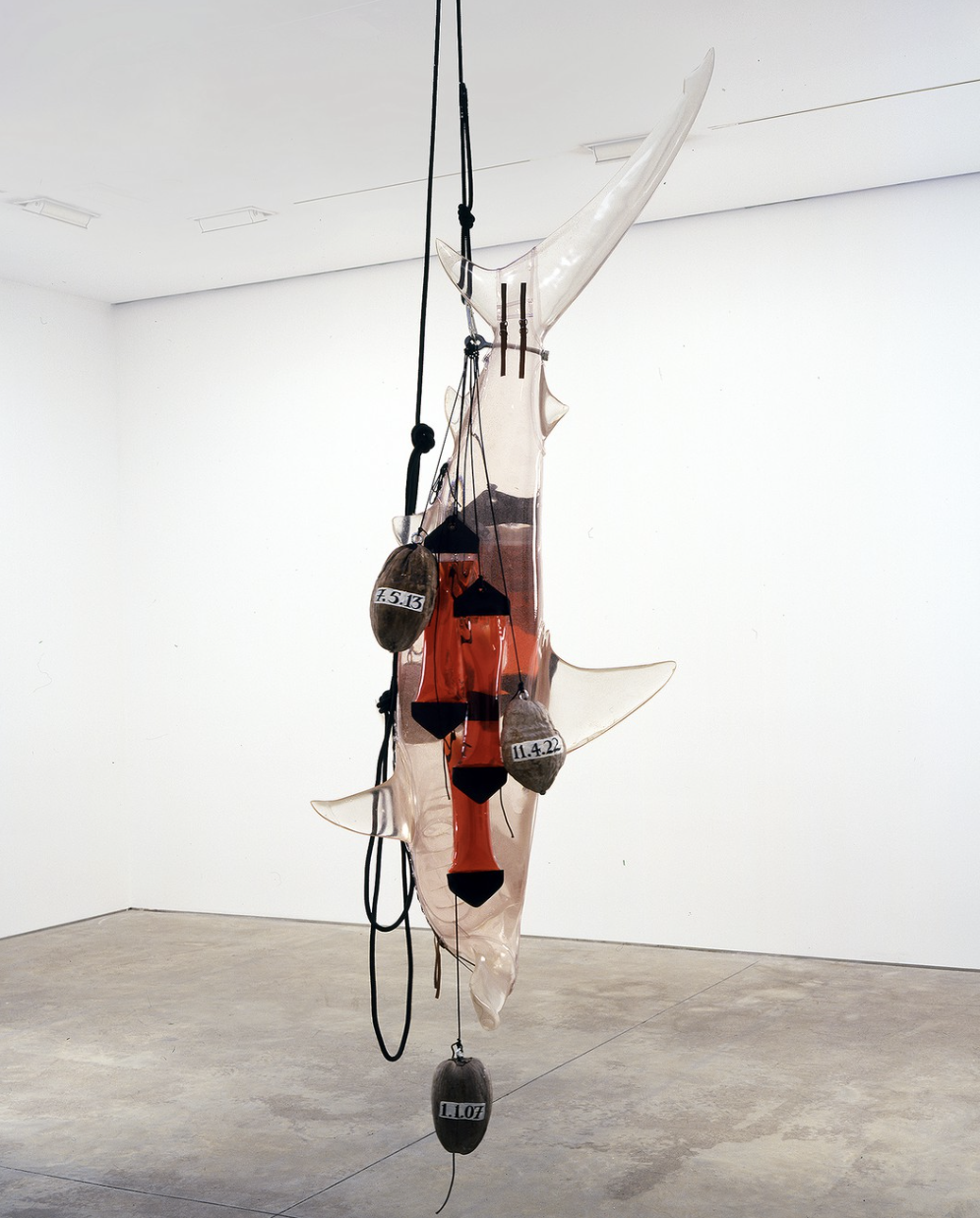
Bismarck Archipelago Shark (2002)
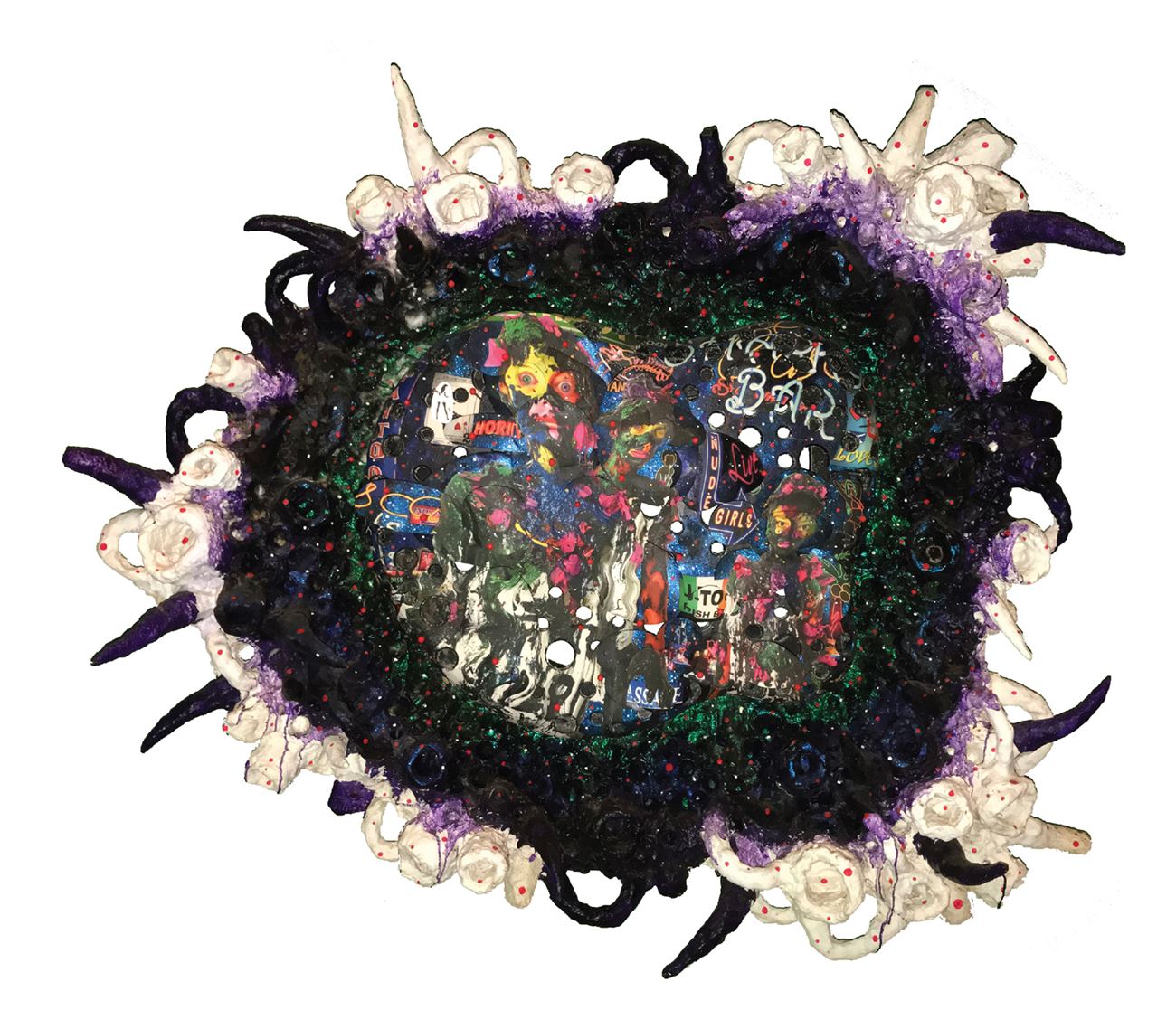
TITNW5 (2019)

Wahine Pa’ina (2015)
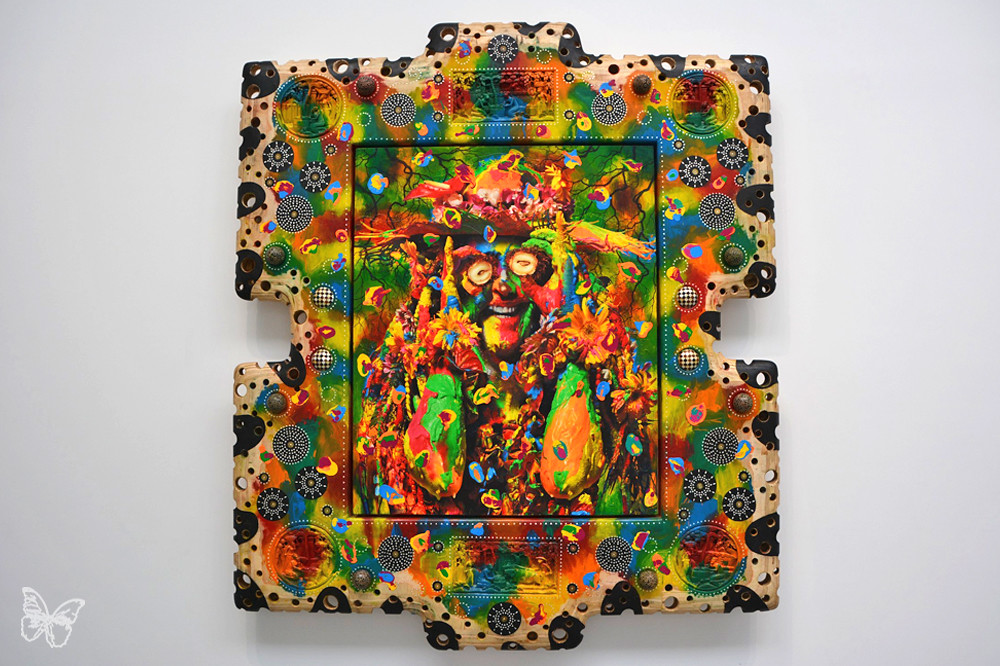

Ornamental Hysteria (2017)

Good Painting (1988)
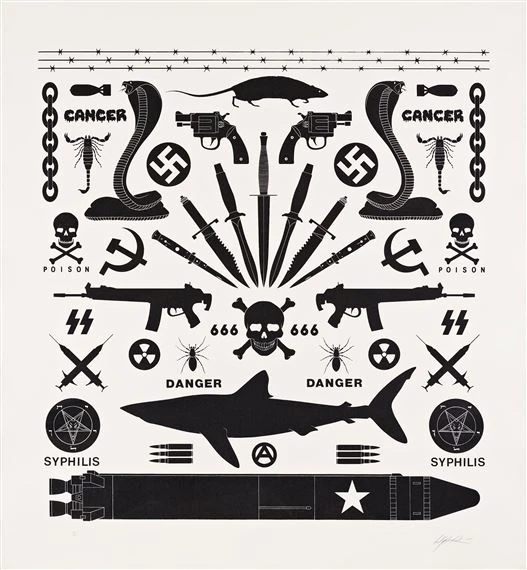
Bad (1988)

Tormented Self- Portrait (Susie at Arles) (1987)

Smiling Woman (2009)
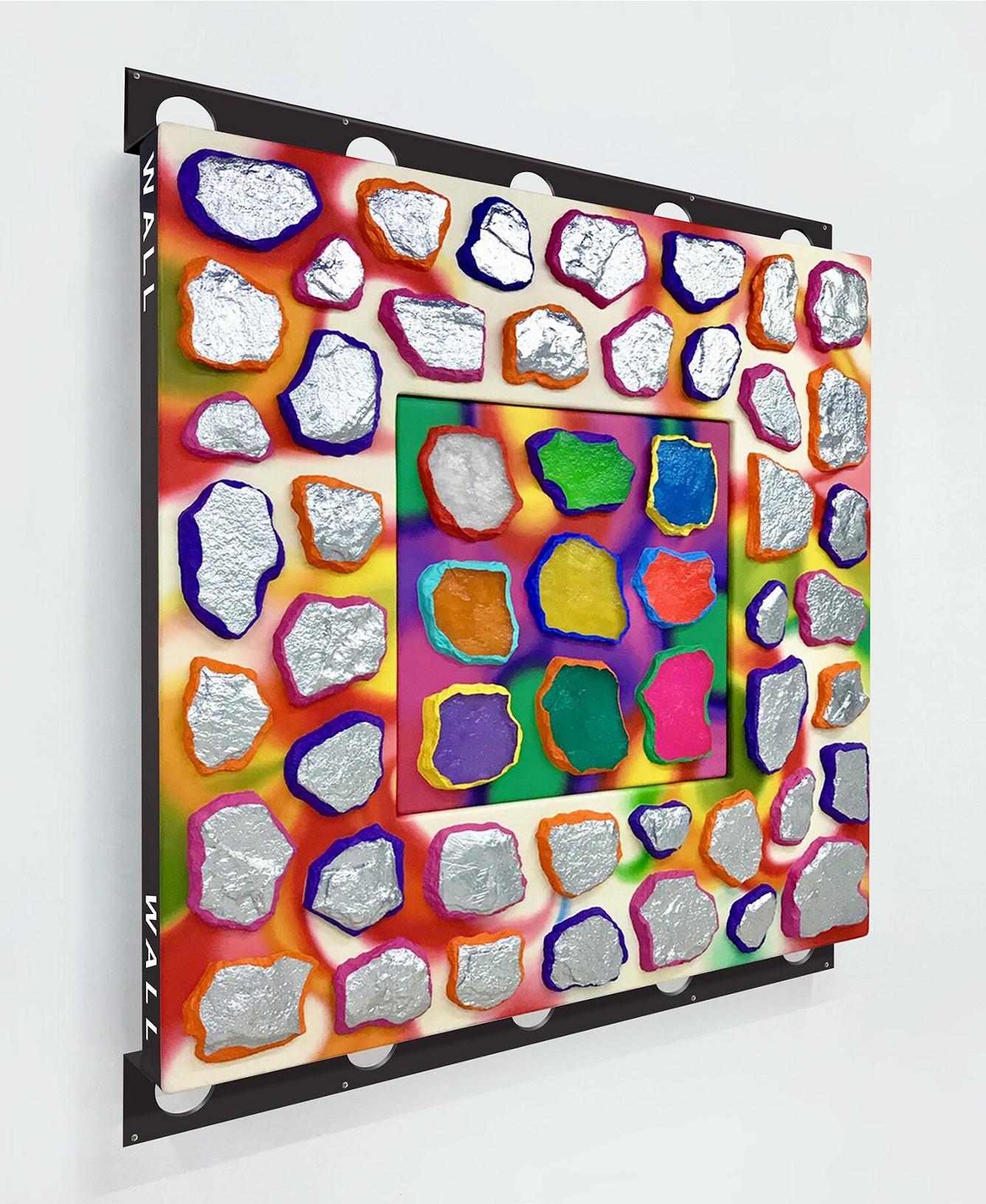
Wall-Wall SnS-S 2 (2017)
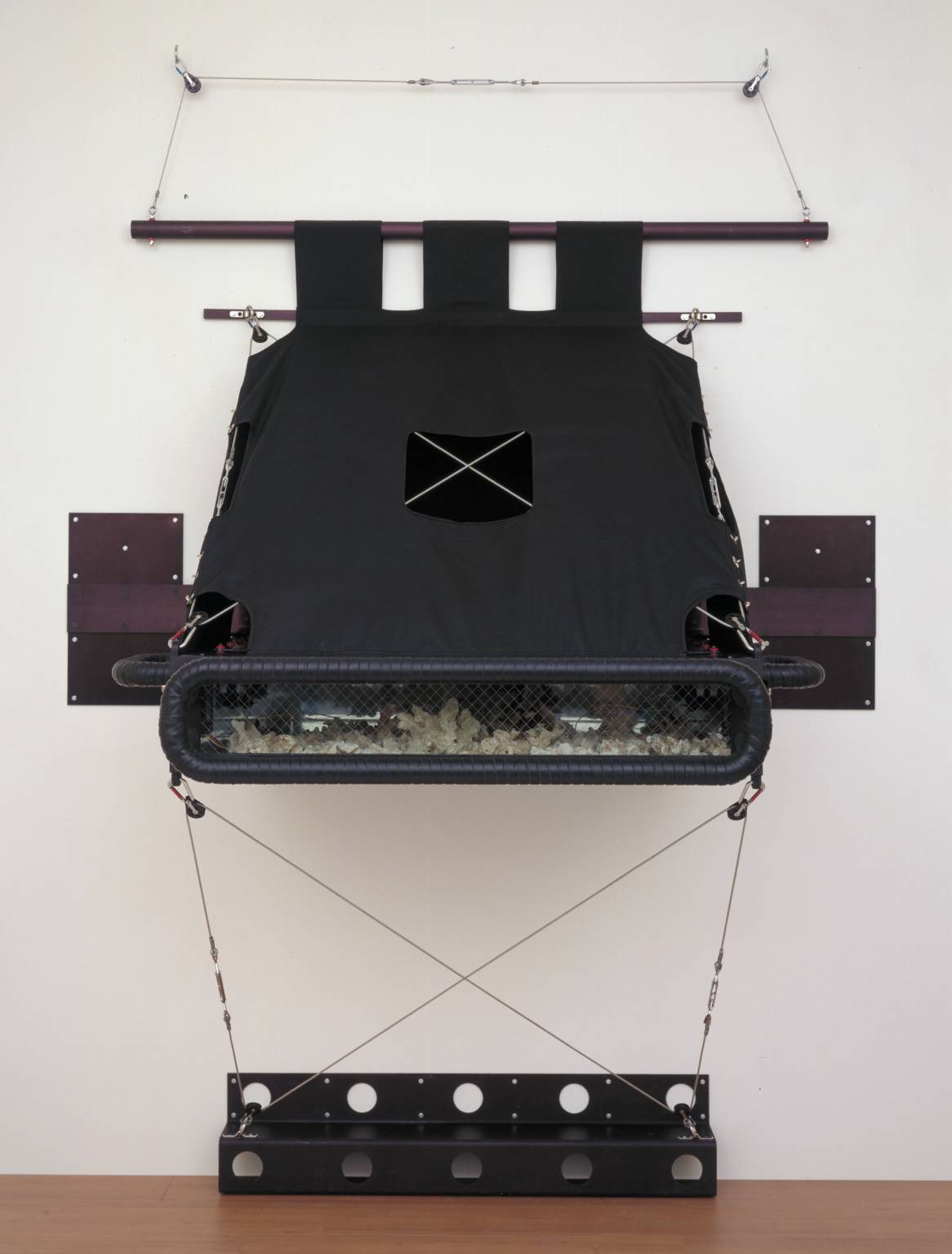
Biofragment #2 (1990)
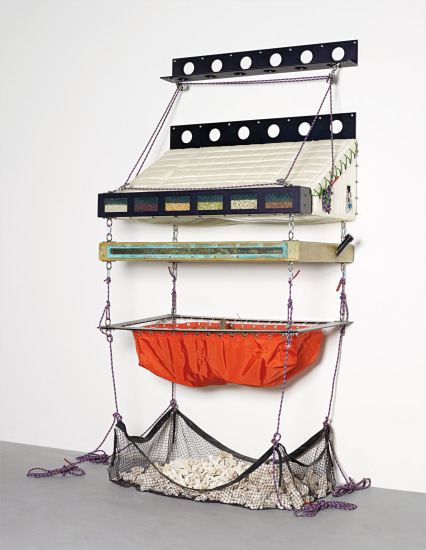
Stratified Landscape #3 (1990)
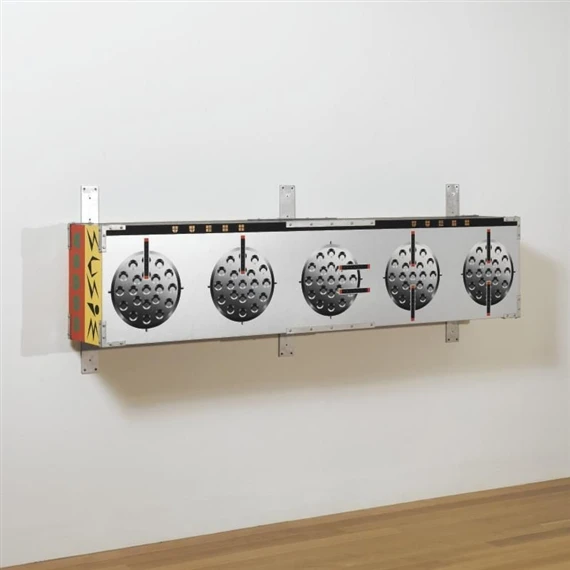
Bickerton Sensor (1986)
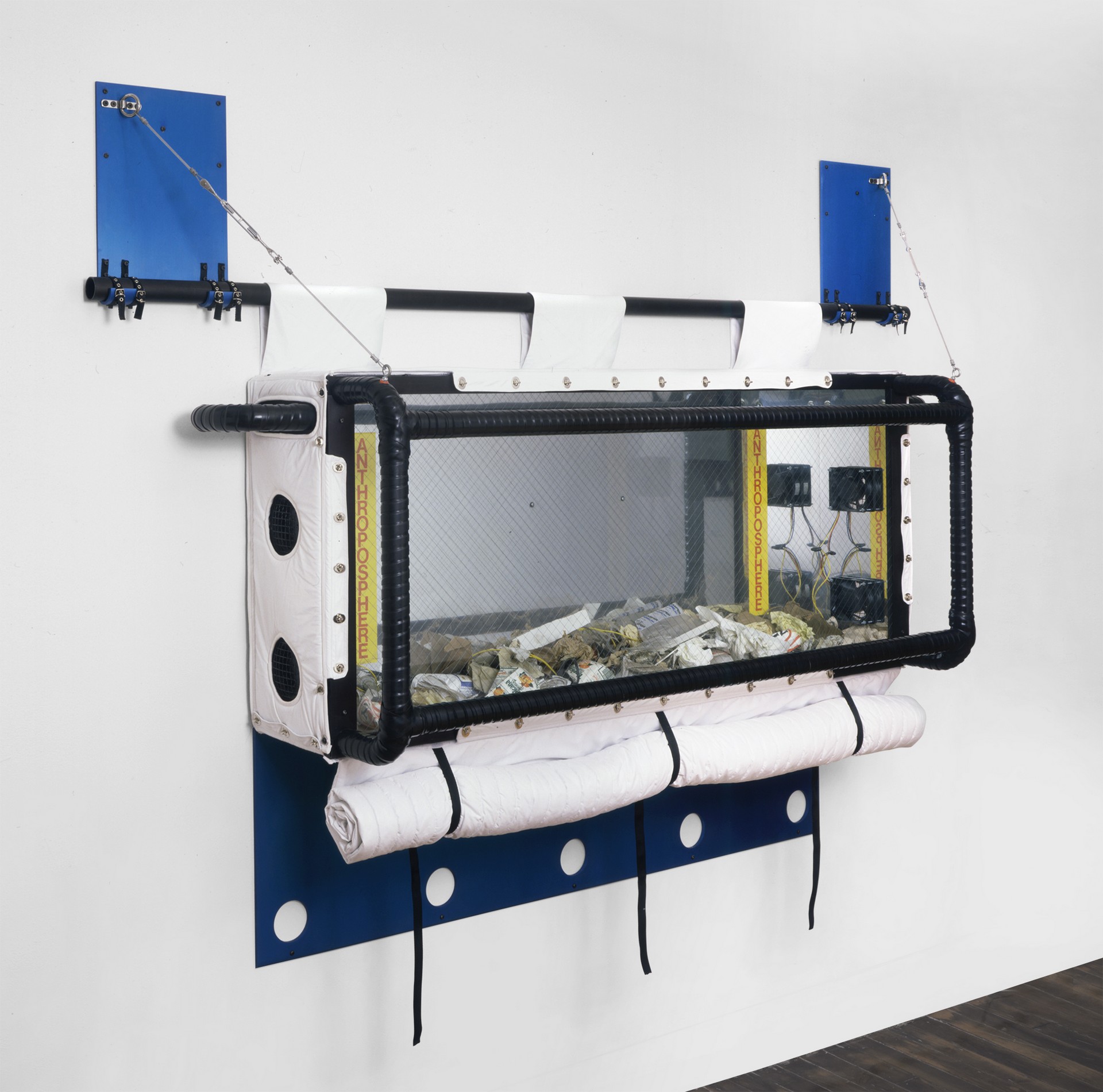
Anthrophosphere No.1 (1989)

Wet Landscape No.3 (1990)
 THE LIMITS OF THE WORLD I (1991)
THE LIMITS OF THE WORLD I (1991)

Green Painting with Boats (2002)
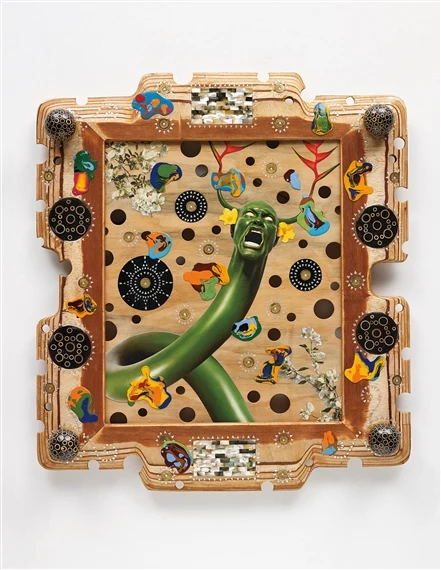
Snake Head Painting (2008)

Seascape: Transporter for the Waste Product of its own Construction #1 (1989)
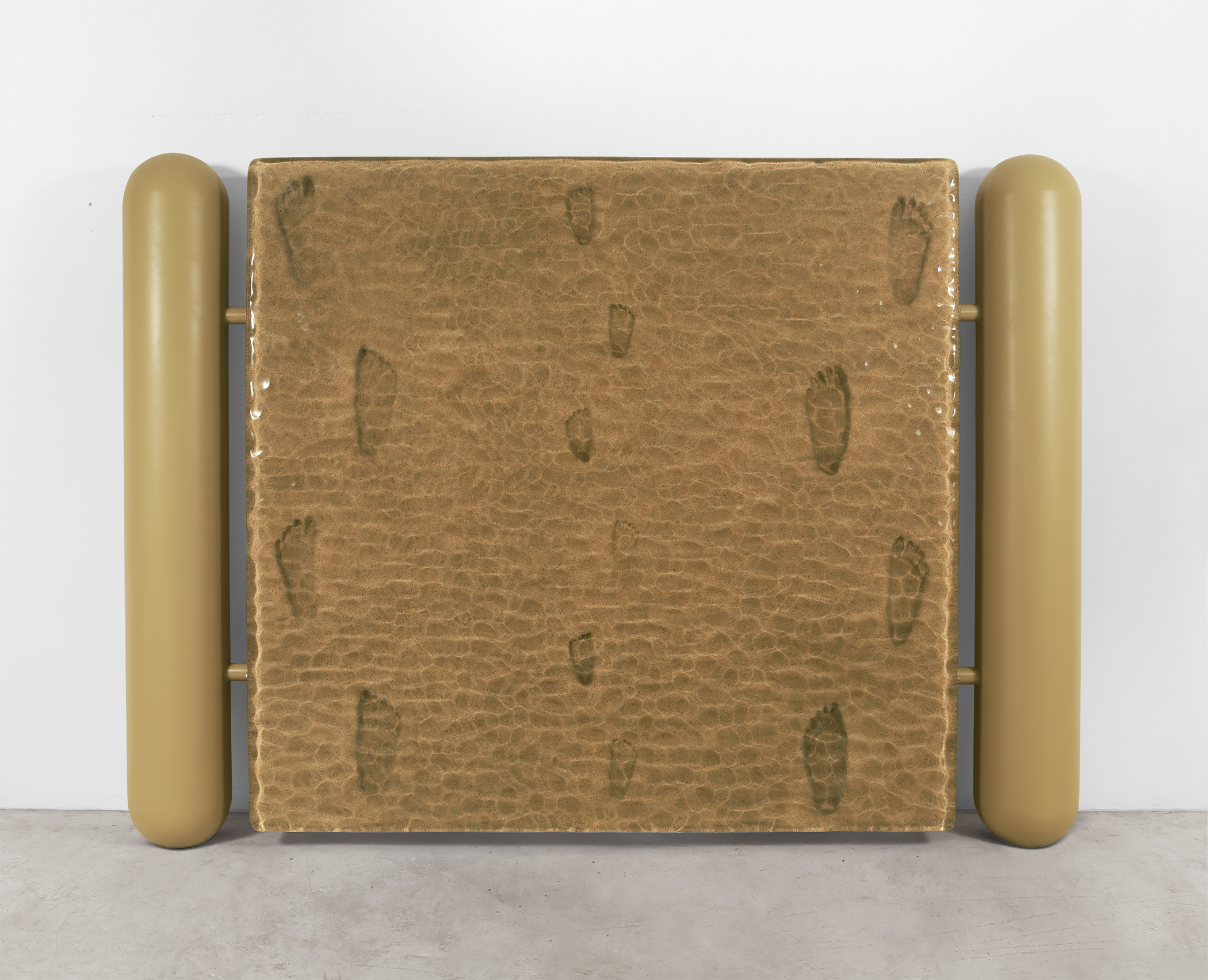
Floating Family Footprints (Flow Tide) 1 (2022)
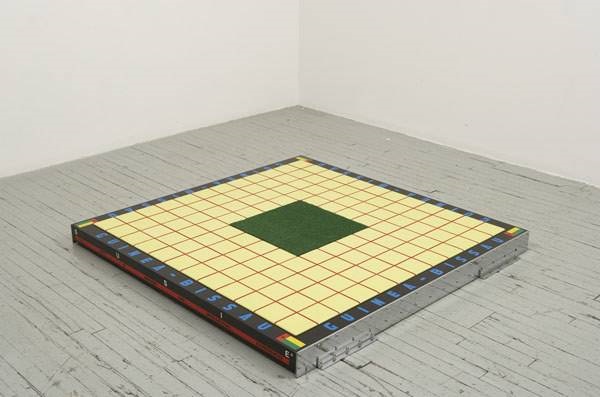
Floor-Floor #2 (Guinea-Bissau) (1988)
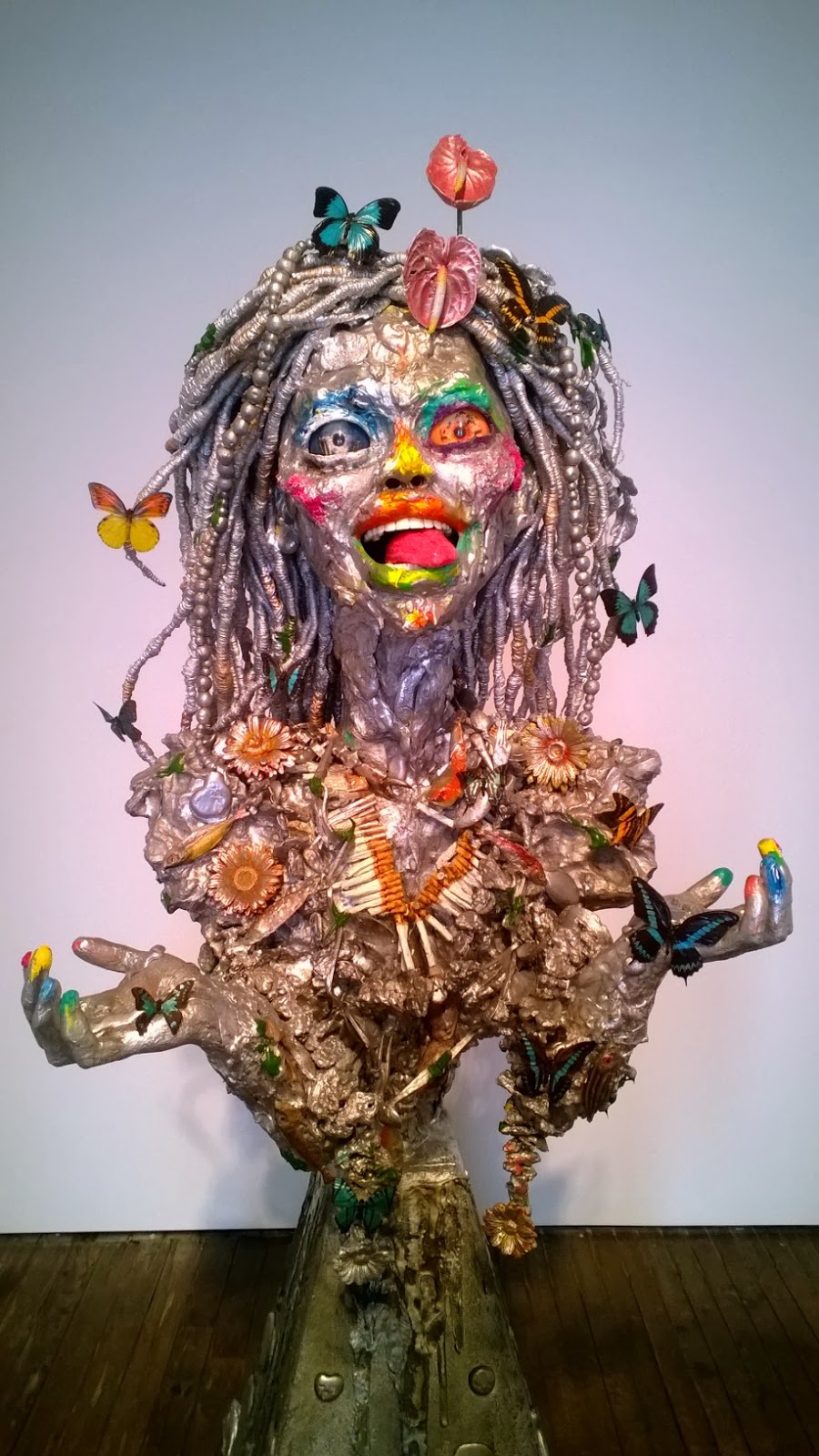
MV2 (2013)
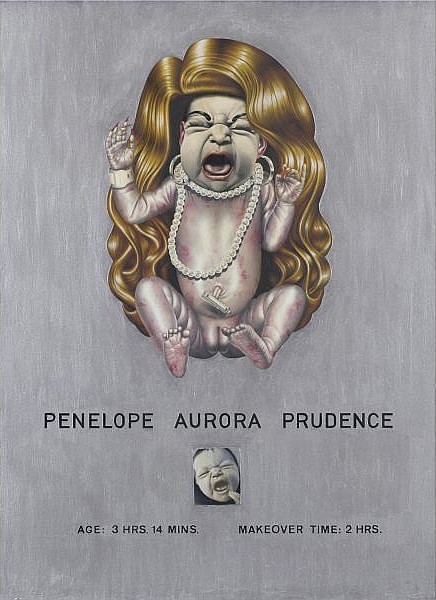
Penelope Aurora Prudence (2008)
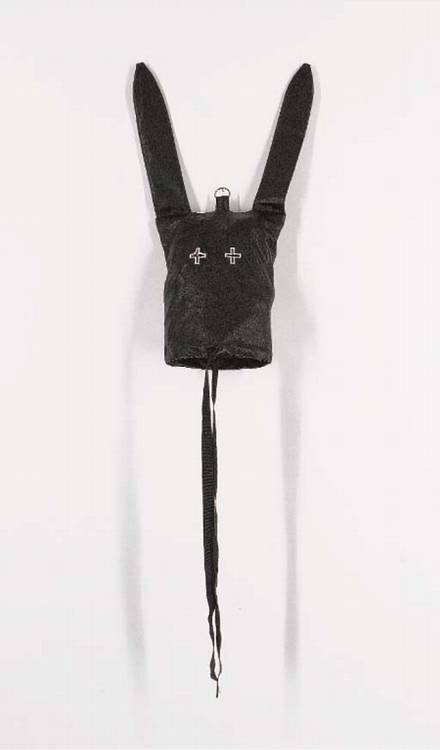
Untitled (1993)
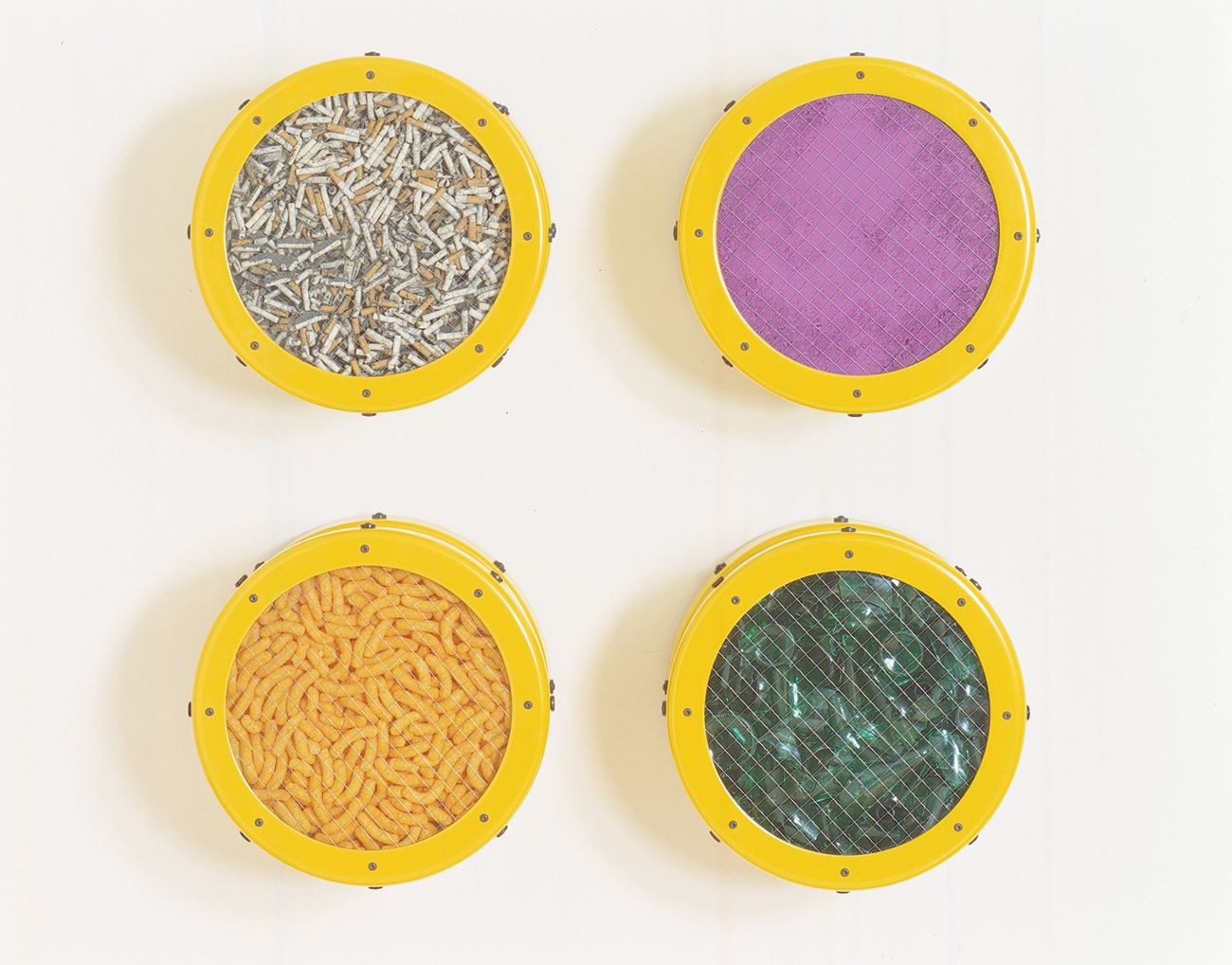
Small Yellow Catalog: Cigarettes, Purple Pigment, Cheese Doodles, Broken Glass (1991)

Susie (1987)

Gug (1986)

Wall Wall #7 (1986)
*
p.s. Hey. ** Jack Skelley, Jack ‘Scoop’ Skelley! Whatever that means! Ha ha, that Santa Sabbath clip. Scrappy! Oh, okay, blurb, gotcha. By when? Let’s confer off-blog. No prob, man. Hey, Klaus, whatever happened to your daughter? Love, Saint Nyuk-nyuk. ** David Ehrenstein, Happy to have intersected with your memories. ** NLK, I have so many non-French friends here who are English tutors. It’s strange but maybe not, I guess. Oh, yes, Le Musée de la Chasse et de la Nature! It’s my single favorite thing in all of Paris. It’s in the Marais. Super highly recommended! Next time you’re through Paris, and if I’m here at the same time, let’s have a coffee or something, eh? I think I am very lucky to have a set of friends who can talk Rivette, Duras, etc. and who probably think LeBron is a TikTok influencer. Although they do talk US politics. I don’t think that’s escapable. I’m good, just barreling forward with the preparation stuff mostly. Paris is all Xmas-ed up. It looks good. ** _Black_Acrylic, I hadn’t seen that Jarman/Coil vid or known of its existence before I found it the other day either. Desk! The should be a life changer. Mine sure is, God knows. ** Dominik, Hi!!! Yes, the huge problems guy is still in the project. That’s the one scary part. You know, I think it’s quite possible that if we established the International Wincing Contest it could in fact become a huge thing just because … every must love wincing. It’s just that we haven’t brought that love to their consciousness yet. So, who knows. Eurowinceavision? I guess that’s a mouthful. I was thinking of doing an Orban-related love thing yesterday, but I didn’t want to kill the vibes, but, Lord, what piece of shit! Love opening a museum dedicated to the plastic drinking straw, G. ** Dom Lyne, Hi, Dom. I remember parties like that. Yeah, somewhere in storage I have a whole bunch of Super8 ‘experimental’ films I made in my teens that I really need to either preserve or lock in an impermeable safe somewhere. I’m glad you found things you like in the film program, cool. I’m good, very busy with the film stuff. Wow, the heart of the matter. Intense. And a really good place. Take care, buddy. ** Steve Erickson, Hi. Happy you were intrigued. I don’t know why Sadie Benning decided to make paintings and drawings instead of videos at a certain point. I like her static stuff, but I don’t think it holds a candle to her video work. Everyone, Here’s Steve: ‘For Slant Magazine’s list of the 50 best songs of 2022, I contributed blurbs on Zach Bryan’s “Something in the Orange,” Black Sherif’s “Kwaku the Traveler,” Jnr Choi & Sam Tompkins’ “To the Moon,” Taylor Swift’s “Would’ve, Could’ve, Should’ve” and Big Thief’s “Simulation Swarm”. ** Jamie, Hey, J-man! Great to see you! Thanks about the film program, pal. Just trying to help fill in the gap left by the exit of your beloved film series. I’m fine, working my ass off — speaking of asses — on the film stuff. I think there’s probably a slave or ultra-piggy bottom escort out there who could imagine a good way to have a head stuck up his ass. London! Hope it clears the air of everything untoward. Have huge fun. Not accidentally kicking over the homeless guy’s cup of change with my big clumsy foot love, Dennis. ** T, T! I’ve been thinking about and wondering how you are! Mm, I remember your two jobs. Is it the one that’s nearish to me? Obviously, I hope a money-exuding other option materialises any second now. Mm, I don’t yet know if I’ll be here in early Feb. I’m going to be back and forth to LA fairly constantly between the end of the year and March, but the exact schedule remains a blur. I’d love to see Moor Mother with you, obviously! Yes! Let me try to figure out my dates as soon as I can. Thank you for the odorous resignation letter. I know just who I would love to receive it from. I hope your Thursday occasions every negative aspect of your current life to throw you a going away party, me. ** Bill, Thanks, Bill. Carter is still plugging away, that’s good. He still holds onto the rights to that ‘porn’ film I wrote for him a thousand years ago, but I doubt he’ll ever make it. I tried to get him to give the rights back at one point so I could turn it into a graphic novel, but refused, so he’d better make it some day. ** Paul Curran, Howdy, Paul! Thank you! Ah, it’s cold, but it’s not murderously cold at least, or at least until maybe tomorrow. How’s Tokyo? I can’t imagine it being frozen? ** Okay. The artist Ashley Bickerton died very recently, and that made me want to do a gallery show of his work, which I’ve always been fond of since back in the 80s when he was the super-buzzy peer of Koons and Richard Prince and all those dudes. I hope you enjoy it. See you tomorrow.




 Now available in North America
Now available in North America 
Hey Dennis. Some of his work is quite beautiful… Hey from Athens. The move is done in a completely new area to me in Athens, imagine that I lived in the same neighbourhood in Athens for over twelve years. I will go for long walk to investigate. My new catch phrases I say all the time are “Hit the streets” and “The frame blurs”. I love coming up with phrases and sentences and turn them into hits in my mind by repeating
I did a series of Ode to my rosy cheeks pictures on Instagram (a friend helped me) and I was happy because they made me think of getting red cheeks when I was younger whenever someone talked to me… It inspired me for writing… Also I appreciate your mention of this place in the Marais in the comments. I wrote it down. You know one time I did look for the word Paris in the search box to find places mentioned for recommendation. I want to do a list to visit when I come there early next year. I unearthed a drawing this morning that made me so happy because I do not remember doing it and I loved it so hard. I showed you on Facebook. I wish for inspiration and super creative mood at all times – please
Hi!!
Mh, maybe love will find a way to write the problematic guy out of the project somehow. To replace him with someone more fitting – which, based on the things you’ve shared about the extent of his ignorance, shouldn’t be too hard.
Eurowinceavision, haha. You might be right. It might really be an attractive opportunity – after all, everyone has at least some practice already, and it’s a talent that can be polished for free.
All I can say is that this country is a shame.
I’d visit love’s museum. Thank you! Love gifting you the Ashley Bickerton piece of your choice from above – which one will it be? (It’s a tough one for me. My favorites are “TITNW5,” “Untitled,” and “Small Yellow Catalog: Cigarettes, Purple Pigment, Cheese Doodles, Broken Glass.”) Od.
Hi Dennis, good post. all losses are painful but here we are still at the foot of the canyon so to speak (I do not know very well how to express it). Today is a holiday in Spain and it is a gray day but it is not too cold. I hope you have good plans and enjoy the day. I’m looking forward to starting new things and new projects and resolutions for next year. When are you going to post on your page the traditional lists of the best of the year (according to you), about the different artistic disciplines.
It’s good to see a thorough review of AB’s work here. His mega success in the 80s led to him not being taken seriously, and I was guilty of that I think.
Tomorrow will be a big day for me as I get the power wheelchair, something I’m really looking forward to. What with that and the supercool new writing desk, it’s the dawning of a new era!
Hey Dennis – I wasn’t familiar with Ashley Bickerton’s work and this post is a real eye-opener. So many stunning creations here. Yesterday’s film post was a blast as well.
I’ve been mostly lurking here the past few weeks. I was glad to read the LA film trip went well. Is the film mostly cast now? Did you have a chance to see Michael S while you were there?
I’ve been busy with various things. Julian Calendar released a new e.p. ‘Severed Tongues Speak.’ It features some fuzagi beats, industrial funk, and a glam ballad. You can buy/stream it here: https://juliancalendar.bandcamp.com/album/severed-tongues-speak
It’s part of the same batch of MIDi recordings as the first ep. There will be a third one in January. if you check it out, let me know what hits you.
Screened some experimental films here – program of Sonbert, Gehr, Lowder, and Solomon. I’ve bee showing some new visual art pieces – you can see those up on FB. Lots to say about all this, but maybe we can catch up over Zoom sometime, if you’re not too consumed by film prep?
I was lucky to attend a conference on William Gaddis at Washington U in St. Louis in October. Thought of you when I got to hear Joy Williams and Rae Armontrout read on the same night. It was mind zappingly great. Rae read from her brand new book ‘The Finalist’ as well as unpublished poems she’d written over the past 6 months. Everything was incredible – absolute top of her game. Made me want to explore her more recent work.
Hope you’re doing well xo
Do you know Pierre Bressan’s films? In addition to yesterday’s shorts (KRAKATAU is great), I watched two of his ’70s shorts last night. They combine elements of Werner Schroeter and early Philippe Garrel with the horror movie, setting up ominous imagery that never turns into a full narrative. He only worked as a filmmaker for 9 years, but he made a feature, several medium-length films and 6 shorts during that period.
Here’s my review of THE WHALE: https://gaycitynews.com/the-whale-weight-respect-movie-review-2022/
That’s it, thanks! Sure, I’d like that.
Whoa—the picture of Tormented Self-Portrait (Susie at Arles) is from the art museum I worked at last year. That was one of my favorite pieces in the museum and always started arguments. There was a scandal one day when someone took or moved the handling gloves in its side pouch. I never looked into more of his work, so thanks for this post.
untitled #3 and Wall Sportif #1 (LIBERIA) are my favs from above. Very diverse range of works. So sad to die young of ALS. A very rough disease.
We had a schedule change at work this week and ive ended up with three extra days off! a mini vacay. And today i wrote for the first time in months. one scene that ive been keeping in my head for over a year now. I found the muse. trying to write in 1st person for the first time. ill get some more down tomorrow and try to get the ball rolling on this thing.
cheers,
Ian